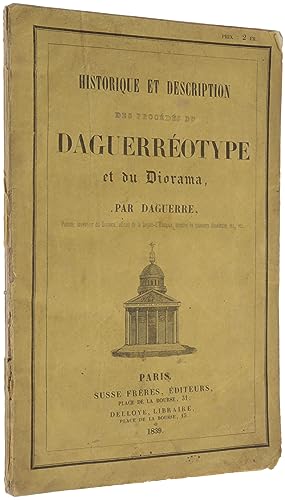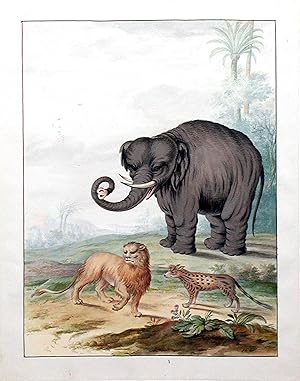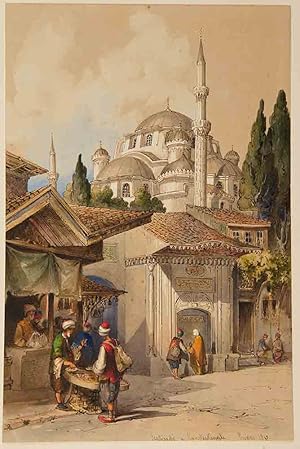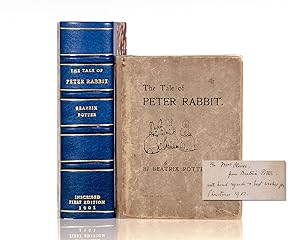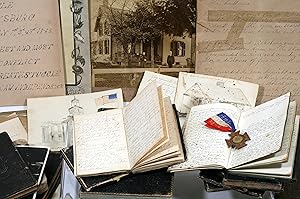drawing, Ejemplar firmado (Más de 46.000 resultados)
Tipo de artículo
- Todo tipo de artículos
- Libros (38.626)
- Revistas y publicaciones (29)
- Cómics (49)
- Partituras (4)
- Arte, grabados y pósters (4.028)
- Fotografías (35)
- Mapas (8)
-
Manuscritos y
coleccionismo de papel (3.402)
Condición
Encuadernación
Más atributos
- Primera edición (24.419)
- Firmado
- Sobrecubierta (15.607)
- Con imágenes del vendedor (24.562)
- Sin impresión bajo demanda (46.167)
Gastos de envío gratis
Ubicación del vendedor
Valoración de los vendedores
-
Drawings in Natural History - Birds An album containing two hundred and twenty-one watercolors
Año de publicación: 1815
Librería: Arader Galleries Drawings & Watercolors, New York, NY, Estados Unidos de America
Ejemplar firmado
Hardcover. Condición: Near Fine. JOHN ABBOT (BRITISH, 1751-1840) Drawings in Natural History - Birds An album containing two hundred and twenty-one watercolors The first signed and dated J. Abbot ad vivum delin. Nov. 1815 in red ink in the lower margin, the majority titled in pencil in the lower margins, the sheets numbered from 1 to 221 (upper right), several inscribed (or with cropped inscriptions) on the upper edge on the reverses ( Its note in March, is like the creacking of a sign board in Windy weather [Lanius Excubitor Carolinensis, Grey Shrike]), Knowsley library location recorded on the front free endpaper ( Knowsley / . Library / East Division / North Bookcase B / Shelf 2 No 6 ) Pencil and watercolor on paper, large quarto, marbled endpapers, the 13th Earl of Derby s bookplate on the front pastedown, contemporary red morocco gilt, spine lettered Drawings in Natural History / Birds / by J. Abbot, gilt edges 1802-1815 Sheets 11 7/8 x 9 ¼ in.; the album 12 1/4 x 10 1/4 in. Provenance: John Abbot to Joshua Elder White, to Edward Smith Stanley, later the thirteenth Earl of Derby, in 1817. Georgia was John Abbot s Eden. He declared the pine woods of Georgia a beautiful Garden, consisting of a great variety of beautiful flowers, as if Flora, conscious of approaching winter, put on her most gorgeous suit, before she retires, till the return of Spring. [Abbot to Heinrich Escher, 15 November 1834.] This collection of 221 striking and distinctive bird watercolors is a pristine example of one of the foremost bird artists in American natural history and Georgia wildlife. Very few of Abbot s original works have been published or otherwise reproduced. Thus, they have never been popularized like illustrations by Mark Catesby (1683-1749) and John James Audubon (1785-1851). His original watercolors are exceedingly rare. During his career as an artist, John Abbot created five-thousand drawings, but only a rare one-thousand were related to birds; the remaining concentrated on insects and spiders. The present set of 221 watercolors is most closely related to the artist s set of drawings at the Houghton Library, Harvard University. Marcus Simpson Jr. s 1984 assessment of the present set and the Harvard set found that 106 of the Harvard watercolors species are also found in the present set from Knowsley. Comparatively, he also found that the Chetham Library set and the British Library set share many similarities. However similar these compilations may seem, Abbot did not keep a master set of bird drawings on which he drew for future commissions. Instead, he painted from fresh specimens. This is evident in the manuscript notes that accompany a number of his watercolors they include the specimen s size, which varies from one set to another. When one compares the same species painted in more than one collection, he is painting from different specimens. The artist generally ordered his sets similarly to Alexander Wilson s American Ornithology. The Knowsley set dates from 1802-1815. For thirty-nine of the compositions, Abbot used paper dated 1802, 1804, 1805, 1808, and 1810. Some have graphite notes on the verso, several of which the writing trimmed when they were originally bound. But why the lag between start to finish? Abbot s letter of 1814 to George Ord explains the hiatus: "At the commencement of the War I had undertaken to make a collection of stuffed Birds & as a complete collection of Drawings of them in colors as I was able for a Genrleman in England but last fall in despair of seeing peace restored, I retired to the Country after having made about 220 Drawings throwed away a large collection of stuffed skins, have entirely laid it aside, & entered into another line of employment, where I am in hopes the mad and destructive Ambition of the rulers of the world can but little interfere." Loca: 6.3BC.19F.
-
Harry Potter and the Philosopherâ s Stone.
Publicado por Bloomsbury, London, 1997
Librería: Raptis Rare Books, Palm Beach, FL, Estados Unidos de America
Original o primera edición Ejemplar firmado
First edition, first printing of the rarest book in the Harry Potter series, a cornerstone of young adult literature, and one of the best-selling books of all time. First printing with "First published in Great Britain in 1997", the full number line "10 9 8 7 6 5 4 3 2 1", "Joanne Rowling" for "J.K. Rowling", and "Thomas Taylor1997" (lacking the space) on the copyright page and "1 wand" listed twice (as the first item and last item) on the "Other Equipment" list on page 53. Octavo, original laminated pictorial boards, without a dust jacket as issued. Association copy, inscribed by the author on the dedication page, "to Bryony - who is the most important person I've ever met in a signing queue & the first person ever to see merit in Harry Potter. With huge [underlined 4 times] thanks. J.K. Rowling." Additionally signed and with a large original drawing by cover illustrator Thomas Taylor. The recipient, Bryony Evens was one of the first people to read the opening chapters of Harry Potter and the Philosopher's Stone, the first to recognize the workâ s inherent value, and perhaps the most instrumental figure in getting the book published. Working at the time at Christopher Little Literary Agency in Scotland, Evens was the first point of contact in receiving and sorting unsolicited manuscripts. Evens read Rowlingâ s submission of the first three chapters of the book and passed it along to Little, who approved that she obtain the full manuscript and promote it to suitable publishers. Given a small budget, Evens was only able to print three manuscripts to pitch to publishing houses and, after twelve months and twelve rejections, was finally given the green light by editor Barry Cunningham from Bloomsbury in London. Bloomsbury published the book on June 26, 1997. A year later, Bryony attended a Harry Potter book signing event where Rowling received her with open arms and warmly inscribed the present volume. Rowling was working as a researcher and bilingual secretary for Amnesty International in 1990 when she conceived the idea for the Harry Potter series while on a delayed train from Manchester to London. The seven-year period that followed saw the death of her mother, birth of her first child, divorce from her first husband, and relative poverty. A true "rags to riches" story, the publication of the present volume would bring her from living on benefits to billionaire status. She was named the world's first billionaire author by Forbes in 2014 and the Harry Potter series has become the best-selling book series of all time. In near fine condition with a touch of rubbing to the extremities. At the time of the bookâ s publication in 1996, illustrator Thomas Taylor had just graduated from art school and was working at Heffers Childrenâ s Bookshop in Cambridge. At Heffers, Taylor educated himself on the childrenâ s book market and its major publishers and decided to submit a portfolio of his illustrations to the offices of Bloomsbury Publishing, including several drawings of dragons and wizards. Taylor heard back from Bloomsburyâ s editor, Barry Cunningham (who had recently decided to take a chance on publishing Harry Potter and the Philosopherâ s Stone after it had been rejected by twelve other publishers) almost immediately. Cunningham phoned him at Heffers and asked if he could create a design for the cover of a relatively unknown authorâ s first book about a schoolboy wizard. He sent Taylor an incomplete manuscript of the book and, after two days, Taylor had a final product: a watercolor painting of a young Harry Potter with his lightning-bolt scar standing next to the Hogwarts Express on Platform Nine and Three-Quarters. Only 500 copies of the first printing were published, 300 of which were distributed directly to libraries. Housed in a custom half morocco clamshell box made by the Harcourt Bindery. An exceptional association and effusive inscription to the person who first recognized the value of Harry Potter. The first novel in the Harry Potter series and Rowling's debut novel, Harry Potter and the Philosopher's Stone follows Harry Potter, a young wizard who discovers his magical heritage on his eleventh birthday when he receives a letter of acceptance to Hogwarts School of Witchcraft and Wizardry. The book was first published in the United Kingdom on June 26, 1997 by Bloomsbury and in the United States the following year by Scholastic Corporation under the title Harry Potter and the Sorcerer's Stone. The book reached the top of the New York Times list of best-selling fiction in August 1999 and stayed near the top of that list for much of 1999 and 2000. It has sold in excess of 120 million copies, making it one of the best-selling books of all time. The majority of reviews of the popular book were favorable, revering Rowling's imagination, humor, simple, direct style and clever plot construction. Rowling's style has been compared to that of Jane Austen (her favorite author), Roald Dahl (whose works dominated children's stories before the appearance of Harry Potter), and even the Ancient Greek story-teller Homer. The first book in the series was followed by six sequels published on an annual basis between 1997 and 2000. The series has sold more that 500 million copies worldwide and has been â translated into 80 languages, â making it the best-selling book series in history and among history's most translated literary works.â The last four books in the series consecutively set records as the fastest-selling books of all time, where the final installment, Harry Potter and the Deathly Hallows, sold roughly fifteen million copies worldwide within twenty-four hours of its release. With twelve million books printed in the first U.S. run, it also holds the record for the highest initial print run for any book in history. Harry Potter and the Philosopher's Stone was adapted into the 2001 fantasy film of the same name directed by Chris Columbus, distributed by Warner Bros. Pictures, and st.
-
Drawings for "Originaux de publications d horticulture et d arboriculture"
Año de publicación: 1887
Librería: Arader Galleries Drawings & Watercolors, New York, NY, Estados Unidos de America
Ejemplar firmado
Hardcover. Condición: Very Good. PIETER JOSEPH DE PANNEMAEKER (b. 1832) 309 orig. Watercolors and 3 orig. Pencil drawings for "Originaux de publications d horticulture et d arboriculture" , 1878-1887. Half-maroquine volumes of the time with gilding on the back. 37.5: 28 cm. - ILLUSTRATION: 309 original watercolors and 3 original pencil drawings mounted on cardboard sheets. Watercolors as templates for colored panels for various magazine publications about plants, flowers and fruits. 3 volumes. (Flanders 1878-87). Provenance: With an engraved coat of arms bookplate of the Comte de Kerchove de Denterghem; Private European collection since 2008 Literature: Cf. Nissen 2343. - Benezit VI, 503. - Hauswedell (1961) 108, 206. Condition: The originals are mostly mounted on the reverse in 4 places on the cardboard sheets. Some of the original boxes are printed on the back with illustrations from old works. The cardboard sheets a little browned and with small marginal blemishes, the watercolors occasionally a bit dusty and finger-stained. Binding somewhat rubbed, one spine renewed using old material, book block there supplemented with blank pages, one cover somewhat light-streaked. All in all beautiful, unique original watercolors. Magnificent unique specimen with wonderfully luminous watercolored depictions of plants - Impressive collection of original designs by Pieter Joseph de Pannemaeker from the possession of the Comte de Kerchove de Denterghem. The Belgian painter and lithographer Pieter Joseph de Pannemaeker (1832-1904) is known for his magnificent and detailed depictions of plants. His original watercolors in bright colors (occasionally also colored pencil drawings or sketches) found their way into important botanical publications such asIllustration horticole , Revue horticole , Bulletin horticulture and Revue horticulture belge . The cardboard papers were usually labeled by another hand underneath the mounted original and provided with notes indicating when and in which magazine the watercolors were used on which page. Some of the original sheets are already labeled, probably by Pannemaeker s own hand, a few originals were also signed by Pannemaeker. Only some of the leaves are Ed. André, P. Strobant fils and A. Verschaffelt. Most of the natural models for the plants probably come from the large gardens in Ghent. The plants originally come from all over the world, often the results of breeding plants from exotic countries. You can see various maples, amaryllis, azaleas, bromeliads, dahlias, ferns, heather and heliconias, carnations, orchids, palm, arrowroot and soap tree plants, balsam and much more. The three volumes also contain numerous watercolors on fruits: pears (30), Apples (12), grapes (3), blackberries (2), cherries (4), peaches (3), plums (2), currants (2), strawberries, apricots, gooseberries (4) and melon. The designs also include indoor plants such as cob thread, begonias, file leaves, arum plants, dragon trees, yucca palm, milkweed and nettle plants. Impressive collection of original designs by the artist Pieter Joseph de Pannemaekers from the collection of the Comte de Kerchove de Denterghem with his ex libris. Magnificent unique collection with wonderfully luminous watercolored depictions of plants. 312 original watercolors as templates for various magazine publications on plants, flowers and fruits, among them "Illustration horticole", "Revue horticole", "Bulletin horticulture" and "Revue horticulture belge". Contemp. half calf bindings. 3 vols. - The originals are mostly mounted on the reverse in 4 places on the cardboard sheets. Some of the original plates have illustrations from old works on the reverse. The cardboard sheets slightly browned and partly with small marginal defects, the watercolors occasionally a bit dusty and finger-stained. Binding rubbed, 1 spine renewed, using old material, the book block supplemented there with blank sheets, 1 paper covering partly sunned. Altogether fine unique. Loca: 6.3BC.19I.
-
The Hobbit.
Publicado por George Allen & Unwin Ltd, London, 1937
Librería: Raptis Rare Books, Palm Beach, FL, Estados Unidos de America
Original o primera edición Ejemplar firmado
First edition, first issue of Tolkien's classic tale, "among the very highest achievements of childrenâ s authors during the 20th centuryâ (Carpenter & Pritchard, 530), one of only a handful of presentation copies reserved for Tolkien to give to family members, colleagues and close friends. Octavo, original cloth, cartographic endpapers, frontispiece and 9 full-page uncolored illustrations after drawings by Tolkien. Presentation copy, inscribed by Tolkien on the flyleaf, "Mr. & Mrs. Livesley & Edgar with best wishes from J.R.R. Tolkien." The recipients, the Livesleys and their son Edgar, ran the Kennaway House, a Regency town house in the village of Sidmouth, East Devon which Tolkien used as a summer holiday home and the surrounds of which inspired the landscapes, flora, and fauna of The Shire", the region of Middle-earth inhabited hobbits first introduced in The Hobbit. Situated on the rocky coast of the rustic Devon countryside, the village of Sidmouth has featured in a number of famed literary works, as "Stymouth" in Beatrix Potter's children's story The Tale of Little Pig Robinson (1930), "Idmouth" in Thomas Hardy's Wessex, "Baymouth" in William Makepeace Thackeray's Pendennis, and "Spudmouth" in The Merry Adventures of Robin Hood by Howard Pyle. English poet Elizabeth Barrett lived in the town from 1832 until 1835. In the final stages of The Hobbit's revisions, Tolkien notably penned a list of special recipients he wished to present copies of the first printing of the book to upon publication, including C.S. Lewis, R.W. Chambers, R.W. Chambers, Simone dâ Ardenne, George S. Gordon, Elaine Griffiths, his aunts Mabel Mitton and Florence Hadley, and the Livesleys who hosted him at the Kennaway House. Published on September 21, 1937, the first printing of the Hobbit constituted only 1500 copies and completely sold out by December 15th. In near fine condition. Housed in a custom full morocco clamshell box. An exceptional association of the most highly coveted work in fantasy literature. "In enchanted Middle-earth, a small, comfort-loving Hobbit is awakened from his slumbers by a visitor who tells of lost treasure. Before Bilbo Baggins returns home again, he journeys past wizards and elves, talkative trees and treasure-guarding dragons, all swirling in cosmic battle between good and evil. J.R.R. Tolkien's fully realized fantasy world won over generations of children, and dazzled adults with its deft interweaving of medieval legend and made-up languages, maps, and creatures. Tolkien legitimized the modern fantasy genre, and provided the 1960's counterculture with antiwar, back-to-Eden icons" (NYPL Books of the Century 199). â Professor Tolkienâ s epic of Middle Earthâ ¦ [is] one of [the twentieth] centuryâ s lasting contributions to that borderland of literature between youth and age. There are few such booksâ "Gulliverâ s Travels, The Pilgrimâ s Progress, Robinson Crusoe, Don Quixote, Alice in Wonderland, The Wind in the Willowsâ "what else?â ¦ [They are] destined to become this centuryâ s contribution to that select list of books which continue through the ages to be read by children and adults with almost equal pleasureâ (Eyre, 67, 134-5). "All historians of childrenâ s literatureâ ¦ agree in placing [The Hobbit] among the very highest achievements of childrenâ s authors during the 20th centuryâ (Carpenter & Prichard, 254, 530). Published on September 21, 1937 in a first printing of only 1500 copies, The Hobbit had completely sold out by December 15. â It may have been a surprise to its publishers that a work as sui generis as The Hobbit should have been a popular success, but once it was a success there can have been no surprise in the clamor for a sequel. Tolkien had opened up a new imaginative continent, and the cry now was to see more of itâ (Shippey, 49).
-
2 full-page pen and brush drawings in Indian ink. In: Eaux-fortes originales pour des textes de Buffon.
Publicado por Paris, Martin Fabiani, 1942., 1942
Librería: Antiquariat INLIBRIS Gilhofer Nfg. GmbH, Vienna, A, Austria
Arte / Grabado / Póster Original o primera edición Ejemplar firmado
Small folio (287 x 377 mm). (6), 134, (24) pp. With 31 leaves o plates (sugar aquatints, etchings and drypoints). In unbound sheets as issued, stored in publisher's original cardboard covers, portfolio and slipcase (some slight wear to the latter). Two unique and wholly original brush drawings, adorning a signed and inscribed first edition of this famous suite by Picasso, in perfect condition. - Limited edition of 226 copies: this is number 155, one of 135 on Vidalon vélin. This copy was presented by Picasso to his friend, the painter André Marchand (1907-98), with an autograph inscription and two original drawings, each one full page. The two drawings are executed in Indian ink, pen and brush, heightened with black ink wash. They occupy the verso of the half-title bifolium and the first section title ("Le Cheval"). The first drawing shows a tomato plant in a pot, probably a reference to the still lifes for which Marchand was known. The second presents two different figures of a horse: in the upper half of the sheet, a white horse, seen in profile; in the lower half, a powerful horse's head, also in profile, against a stark dark background. Both are dated by the artist "7 August 44"; the first drawing also bears in the lower right-hand corner the signed dedication: "Pour André Marchand / Picasso". - In 1936 Ambroise Vollard commissioned illustrations by Picasso for the comte de Buffon s 18th century encyclopedia, "Histoire naturelle". The book was published in 1942 with Picasso s 31 prints. The delightful images of the animal kingdom, rendered with exquisite technique, must have surely brought joy to those who viewed it during the dark days of the war. Printed in a relatively small edition of 226, several copies went to friends with unique drawings such as these. - Includes an additional print of the "Mère poule" plate. Provenance: André Marchand; Jean A. Bonna (his bookplate to the portfolio's pastedown). With a certificate from Picasso's daughter Maya, dated 10 October 2002. - S. Goeppert, Picasso (1983), p. 104-107. The Artist and the Book, 231. OCLC 78845813.
-
Two albums of original watercolor drawings, titled on spines: English Birds.
Librería: Arader Galleries Drawings & Watercolors, New York, NY, Estados Unidos de America
Ejemplar firmado
Hardcover. Condición: Good. REV. CHRISTOPHER ATKINSON (1754-1795) Two albums of original watercolor drawings, titled on spines: English Birds. Cambridgeshire, Essex and Cheshire: c. 1784-1795 2 volumes, large 4°. With a near-contemporary 6p. manuscript list of the original contents of the albums. Dark, purple-toned paper throughout, loose mounted with 76 original pencil, watercolor and gouache drawings, some heightened with gum Arabic, most with identifying inscriptions in ink or pencil giving Latin binomial and common name, occasional notes regarding when and where the drawing was executed or where the specimen was obtained, two signed with initials CA, seven dated. Condition: About 26 drawings browned, 13 with staining to margins. Original half roan, the flat spines in seven compartments divided by a double fillet and roll tool, blue Morocco spine label lettered English Birds and green Morocco label lettered Vol II or Vol III, green cloth ties (joints split, upper covers detached). TWO ALBUMS OF VERY FINE ORIGINAL DRAWINGS Christopher Atkinson was the son of the vicar of Thorp-Arch, Yorkshire. He was based at Cambridge from 1773 to 1775, firstly at Trinity College as Pensioner and Fellow, and then as vicar of St. Edward s and Fellow of Trinity Hall. He married Catherine Leicester of Tabley, Cheshire, in 1785, and from that year until his early death remained vicar of Wethersfield, Essex, where he was buried. The majority of the drawings are on wove paper (three of these are watermarked J. Whatman , there is the occasional image on laid paper (one of these is watermarked C. Taylor .) The spine labels imply that there was at least one other volume of drawings, and a number of individual drawings did appear on the market in the 1980s. Despite this, the present albums include a wide range of subjects from most of the families of British Birds: the raptors (the Kestrel, White Owl , Moor Buzzard and Kite), water birds (the Little Grebe, Little Bittern, White fronted Goose), waders (the Red Godwit , Ruff, Long Shanks , Stone Curlew, Green Sandpiper, Avocet, Dunlin and Snipe), seabirds (Kittiwake, Shag, Guillemot, Puffin), warblers ( Mountain Linnet , Grasshopper Lark , Sky Lark, Woodlark), finches (Bullfinch, Goldfinch) and others. There are enough inscriptions to indicate that, in addition to any drawings made at his home, Atkinson also drew whilst in Bridlington on the Yorkshire coast, and at Tabley.
-
Le Problème du Fantôme. Sketchbook containing 49 sketches for an unpainted work.
Publicado por [Brussels, 1946]., 1946
Librería: Kotte Autographs GmbH, Roßhaupten, Alemania
Manuscrito Ejemplar firmado
Sketchbook with 49 drawings, 6 are signed, one is dated "13 August 1946"; (5 1/2 x 4 1/8 in.; 140 x 105 mm); pencil or ink; the sketchbook is titled on the cover "Le Problème du Fantôme." Insight into Magritte's creative process. The sketchbook, used probably during the war, shows studies for several Magritte paintings made between 1941 and 1948: The Meteor (Sylvester, II, 559), The Civilizer (Sylvester, II, 574), The Tempest (Sylvester, II, 576) or Pure Reason (Sylvester, II, 659). - It presents also a remarkable series of studies of iconic Magritte references as hair, women, landscapes or leaves that resemble birds, used for different paintings such as Knowledge of the Natural (Sylvester, II, 488), Daily Bread (Sylvester, II, 497), The Rape (Sylvester, II, 580) or The Fire (Sylvester, II, 599).Others studies are traditional representations of ghosts (a large white sheet) in a Magrittian way (with a smiling face, with woman, a leaf, a ship, a balloon or a drop in the middle of the shadow) for a work he probably never painted. The "Ghost Problem" of the title remains unresolved. Provenance: Suzi Gablik.
-
ALBUM OF ORIGINAL WATERCOLOURS OF SOUTH AMERICA.
Publicado por [Colombia: 1824-1827], 1827
Librería: Arader Galleries - AraderNYC, New York, NY, Estados Unidos de America
Ejemplar firmado
Oblong folio (10 x 14 2/8 inches). 30 EXCEPTIONALLY FINE drawings of which 18 are watercolor (no. 24 is in grisaille) and 12 are pencil (no. 21 faintly signed "Empson"), each with tissue guards (various sizes ca 7 x 9 inches), all mounted into an album, mounting leaves numbered 1-32 in a contemporary hand (no. 16 skipped in numeration, no. 31 removed). Contemporary dark green straight-grained morocco, with floral blind-tooled border and gilt-tooled frame, spine gilt, top edge gilt, pink silk markers (extremities a bit rubbed). Provenance: with the invoice of Francis Edwards dated October 1953, made out to; Jacques Levy, his sale, Sotheby's, 20th April 2012, lot 96 This album of beautiful original watercolours is accompanied by Empson's published account of his journey to South America: "Narratives of South America; illustrating Manners, Customs, and Scenery" (London: A.J. Valpy & William Edwards for the Author, 1836), and the portfolio of illustrations "Fac-similes of Twelve Drawings of Tropical Scenery from Sketches made on the spot by Charles Empson", with 12 plates of which 10 are etched and 2 are lithographed, all hand-colored, and mounted on cards. Empson, a print and watercolour dealer in Bath, spent three years travelling the northern part of South America, for the most part in what is now Colombia, from 1824 to 1827. "The glorious descriptions of Humboldt had induced many persons who had no other motive beyond that of beholding Nature in all her majesty, to explore these regions so gorgeously clothed in primaeval vegetation, and so abundant in every production interesting to mankind. It was my happiness to associate with many travellers who had established themselves in the Republic before any of the European nations had acknowledged the independence of Columbia, and had shared in the vicissitudes of the revolutionary war; but they found ample compensation for all their privations in the inexhaustible variety of the new world. A field so rich, and so extensive, proved an irresistible temptation to the scientific man; the produce and commercial demands of so vast a continent were not less attractive to the merchant, while scenes of grandeur and beauty offered the most fascinating allurements to the imagination of the enthusiast." (Preface). Empson was accompanied by his friend Robert Stephenson, son of the famous railway engineer. They returned with precious objects of pre-Colombian art, including some gold artifacts which Charles later exhibited in Newcastle-upon-Tyne. Unfortunately, some of their possessions were lost in a shipwreck at the entrance to New York harbor. On his return Empson published his account of their adventures as "Narratives South America; Illustrating Manners, Customs, and Scenery: containing also numerous facts in Natural History, collected during a Four Years' Residence in Tropical Regions", 1836, illustrated with facsimiles of his original watercolour drawings, many of which feature in this album. 1: Fine watercolour drawing (6 4/8 x 9 4/8 inches) of the turbulent Rio Magdalena at Angostura with snow capped mountain range in the distance: "The rainy season was commencing as we left El Claro; the river rapidly swelled, and our progress was very slow: after sixteen days of hard toil, we reached Angostura, a place so called, as the river there is confined in a strait between rocks: there is at all times considerable difficulty in getting a heavy boat through this strait, but at particular seasons it is extremely dangerous. On our arrival, the river had swollen until the pressure of water above the Angostura forced the current through the strait with such violence, that it formed a cascade, or salto, as the natives call it." (page 249). 2: Fine pencil sketch (7 x 8 3/8 inches) of the Cocina or Kitchen subsequently lithographed for the published account: "The tenement represented in this sketch is variously denominated, according to the purposes to which it is applied: when the building is attached.
-
First Zoological Inventory of Polynesia - Noury's Fregate la Sireneâ ¦ 458 Original Illustrations in 5 Volumes, 1 Hand-written Text Volume, and 1 Modern publication of the Manuscript
Año de publicación: 1850
Librería: Trillium Antique Prints & Rare Books, Franklin, TN, Estados Unidos de America
Arte / Grabado / Póster Ejemplar firmado
Hardcover. Condición: Fine. This historically significant manuscript is the 'First Zoological Inventory of Polynesia.' The work based on the research of Charles-Gaëtan Noury is entitled Frà gate la Sirene, commendà e par Mr. Noury Capitaine de Frà gate. Histoire naturelle. Voyage dans l'Oceanie, annà es 1847, 1848 & 1849. Iles de la Socià tà , Tahiti & Marquises, Nouka hiva and was unknown until 2017. The work was completed in France after 1850.The manuscript is in 6 volumes, one volume of text and five volumes with 458 illustrations (including 444 watercolors, 10 pen drawings, and 4 pencil drawings). Each illustration is mounted on card and often has French handwritten descriptors with local names. The five volumes with illustrations are bound in green half morocco with gold details and monogram of C.N. to the front boards. The text volume is bound in half-cloth. Also included in the lot is the manuscript published on behalf of the Belgian Academy of Sciences by Michel Jangou after the discovery of this one of a kind work of Noury's. Jangou's publication is entitled Voyage en Polynà sie (1847-1850): Le bestiaire oublià du capitaine Noury and was published in Brüssel in 2017 (available on Amazon as well).All of the illustrations and text were based on the scientific findings of Charles-Gaëtan Noury. It encompassed the entire animal kingdom of Polynesia creating the 'First Zoological Inventory of Polynesia.' Michel Jangou commented in his publication of the manuscript that "Noury produced a pioneering work, the first zoological inventory of Polynesia! He compiled it discreetly, with the invaluable help of a talented painter who remains anonymous. Since then, Noury 's manuscript and the watercolors which illustrate it have remained ignored by everything: it took more than a century and a half for the captain's work, still intact, to find the light and finally be revealed to us." (p. 39)Noury divided the animals into individual classes. The artist depicted the animals with brilliant colors and a mastery of detail. The manuscript depicted several previously unknown species. Watercolor number 183 features a detailed autographed commentary from Noury himself. Noury's text was mainly dedicated to his zoological findings with a smaller section on plants. The individual classes and sections are introduced by a summary table, which follows Milne Edwards zoological classification system of mammals, birds, reptiles, fish, ringed animals, insects, myriapods, arachnids, crustaceans, molluscs, and zoophytes. His descriptions were often enriched with island anecdotes.Charles-Gaëtan Noury (1809-1869) was a French naval officer and naturalist. He boarded the Sirà ne in Brest, France in 1846 as the deputy to Commander Lavaud. Lavaud had been appointed governor of the French settlements in Oceania. While Lavaud served as governor, Noury had command of the Sirà ne and stationed in Papeete (Tahiti). He dedicated himself to scientific research there and with the help of painters produced this remarkable astonishing manuscript.Noury had one work published in Nantes in 1861 entitled Album Polynà sien de M. C. Noury, Capitaine de Vaisseau which showed images of tattoos and artifacts of South Sea curiosities. This work with 15 plates is currently on the market at 25,000 EUR.This one of a kind manuscript from Noury offered here remained undiscovered for over 160 years. It features 458 illustrations and hand-written scientific text that make it a truly astonishing work for any collection.Additional photos available upon request. --- The work is in very good to excellent condition overall. The bindings are slightly rubbed. There can be some faint foxing to title or illustrations. There may be a few minor imperfections to be expected with age. Please review the image carefully for condition and contact us with any questions. --- Paper Size Image or Sheet Size ~ 12 3/4" by 8 1/4"; Mounting Card Size ~ 16 3/8" by 11 3/8" Image or Sheet Size ~ 12 3/4" by 8 1/4"; Mo. Signed by Author.
-
Los Caprichos.
Publicado por Madrid Rafael Esteve ? for the artist, 1799
Librería: Shapero Rare Books, London, Reino Unido
Libro Original o primera edición Ejemplar firmado
First edition, one of approximately 300 copies; quarter broadsheets (311 x 205mm); 80 plates on a single uniform stock of unwatermarked laid paper; etchings with burnished aquatint, many with drypoint and/or burin (fine impressions printed in sepia, printing with great contrasts and bright highlights, the aquatint just beginning to show a little wear on some plates, with the scratch on plate 45, with wide margins, some pale spotting mainly on the first few pages, otherwise in very good condition; black morocco binding by Lebrun, signed on the spine and dated Paris 1844 on the rear cover, tooled in gilt with the Self-Portrait of plate 1 and the name of the artist on the front cover, the motif and title of plate 32 on the back cover, marbled endpapers; within a matching red morocco box, with the name of the artist, the title and the name of the binder on the spine, the inside with a black and gilt morocco inlay showing all the tools used for the binding. The complete set of eighty etchings with burnished aquatint, drypoint and engraving, 1797-1798, on laid paper. A very good set from the first edition, published by the artist in an edition of approximately three hundred copies. With Los Caprichos, Goya for the first time made his visions of the more sinister side of Spanish society and the human soul in general accessible to a wider audience, beyond his small group of friends and patrons. Goya was commercially ambitious, and set himself an enormous undertaking, prepared over several years and based on hundreds of drawings. Harris has estimated that he produced 300 sets (i.e. 24,000 impressions) of the Caprichos, making it at the time the largest series of prints ever conceived by a single artist. But the bitter reality was that perhaps only some thirty sets of this first and only lifetime edition were sold. In 1803, the artist gave the plates and the remaining impressions to the King, presumably to escape the wrath of the Inquisition. A crushing failure at the time, in hindsight Los Caprichos is the pivotal work of Goya's entire oeuvre. In one grandiose, dark symphony he unleashes his unsparing satirical sense and his wild imagination, plate after plate, tied loosely together by related motifs and laconic, often mysterious titles. The only plate without an engraved title is perhaps the most famous of all: the artist, overcome by sleep, with his head resting on a table, is surrounded by creatures of the night: owls, bats, a cat and a lynx. On the front of the table the following words appear vaguely out of the aquatint surface: El sueño de la razon produce monstruos. The phrase is ultimately untranslatable, as sueño can mean both 'sleep' and 'dream'. This ambiguity does Reason dream up monsters or do monsters arise as Reason sleeps? is characteristic of the entire series. Having first conceived it as the title page, Goya changed his mind and placed it as plate 43 right in the middle of the series, dividing the series roughly into two parts. The first part is largely devoted to satires of courtship and prostitution, mocking the vanities and pretensions of the young and old. It is in the nightmarish second part that the monsters arise, witches and demons fly, and goblins awake. Beyond the mere evocation and critique of superstition and witchcraft, the precise meaning of these later plates is even more cryptic. Concealed through visual puns, word play and allusions to proverbs, they often ridicule the idle and ruling classes, the clerics and the nobility. Wickedly satirical and subversive as the Caprichos are in their imagery and content, they also represent a technical revolution. Having previously created a number of competent yet ultimately conventional etchings after Velazquez, Goya in this series suddenly and completely mastered the aquatint method. In particular through his use of blank paper for glowing highlights among dense shades of grey and black, he created images of dramatic and disturbing beauty. What makes Los Caprichos one of the greatest unified series of images ever produced, is not just his extraordinary draughtsmanship or his technical mastery, nor his sharp satirical wit, but the intensity of his imagination and the depth of his humanity.
-
[Hortus Nitidissimis omnem per annum superbiens floribus.
Publicado por Nuremberg: Fleischmann, and Adam Ludwig Wirsing, [plates dated 1753-1786]., 1786
Librería: Arader Galleries - AraderNYC, New York, NY, Estados Unidos de America
Original o primera edición Ejemplar firmado
Folio (18 x 13 inches). 172 fine hand-colored engraved plates by J.M. Seligman, J.M. Stock and A.L. Wirsing after G.D. Ehret, G.W. Baurenfeind, B.R. and M.B. Dietschin, N.F. Eisenberger, J.C. Keller and others (plates 60 and 61, and 121 and 122 counted as one plate each, bound without plates 90, 126, 131, 135, 179 and 180, first two plates with slight vertical crease, plate 97 with small tear at fold not affecting the image). Bound without text. Contemporary mottled calf (joints cracked, extremities scuffed). "ONE OF FINEST RECORDS OF THE CULTIVATED FLOWERS OF THE PERIOD" (Dunthorne). First edition, bound, as often found, without text, which was not published simultaneously with the plates. Described by Blunt as "one of the most decorative florilegia of the mid-eighteenth century" with more than forty of the plates based on drawings by Trew's famous protégé Georg Ehret with whom he had collaborated on "Plantae Selectae". The spectacular plates are "full sized colored figures of Hyacinths, Tulips (over 20 plates), Ranunculi, Anemones, Caryophylli, Lilies, Auriculas, Roses, Narcissi, Iris, Cheiranthi, Asters, Fritilleries, Crown Imperials" (Dunthorne), and are some of the most sought after and important botanical prints in the world. It is no wonder that he became one of the foremost illustrators of botanical images of his time, at a time when it can be said that art of this nature was highly prized and passionately collected. Like his father before him Ehret trained as a gardener, initially working on estates of German nobility, and painting flowers only occasionally, another skill taught him by his father, who was a good draughtsman. Ehret s "first major sale of flower paintings came through Dr Christoph Joseph Trew, eminent physician and botanist of Nuremberg, who recognized his exceptional talent and became both patron and lifelong friend. Ehret sent him large batches of watercolours on the fine-quality paper Trew provided. In 1733 Trew taught Ehret the botanical importance of floral sexual organs and advised that he should show them in detail in his paintings. Many Ehret watercolours were engraved in Trew's works, such as Hortus Nitidissimus [as here] (1750 86) and Plantae selecta e (1750 73), in part two of which (1751) Trew named the genus Ehretia after him. "During 1734 Ehret travelled in Switzerland and France, working as a gardener and selling his paintings. While at the Jardin des Plantes, Paris, he learned to use body-colour on vellum, thereafter his preferred medium. In 1735 he travelled to England with letters of introduction to patrons including Sir Hans Sloane and Philip Miller, curator of the Chelsea Physic Garden. In the spring of 1736 Ehret spent three months in the Netherlands. At the garden of rare plants of George Clifford, banker and director of the Dutch East India Company, he met the great Swedish naturalist, Carl Linnaeus, who was then formulating his new classification based on plant sexual organs. Ehret painted a Tabella (1736), illustrating the system, and sold engravings of it to botanists in Holland. Some of his paintings of the exotics were engraved in Linnaeus's "Hortus Cliffortianus" (1737). "[Ehret] signed and dated his work, naming the subject in pre-Linnaean terms. He published a florilegium, "Plantae et papiliones rariores" (1748 62), with eighteen hand-coloured plates, drawn and engraved by himself. Ehret also provided plant illustrations for several travel books. His distinctive style greatly influenced his successors" (Enid Slatter for DNB). The number of plates bibliographers have associated with this work differs considerably: Brunet V:943 (calls for 190 plates); Dunthorne 310 (180 plates, actually 178); Great Flower Books p. 78 (180 plates, plates 60/61 and 121/122 are represented by one plate each); Johnston "Cleveland Collections" 493 (190 plates); Nissen BBI 1995 (180 plates, 60/61 and 121/122 each on one plate, referance to Tjaden with 190 plates); Pritzel 9500 (180 pl.
-
Harry Potter and the Philosopherâ s Stone.
Publicado por Bloomsbury, London, 1997
Librería: Raptis Rare Books, Palm Beach, FL, Estados Unidos de America
Original o primera edición Ejemplar firmado
First edition, first printing of the rarest book in the Harry Potter series, a cornerstone of young adult literature, and one of the best-selling books of all time. First printing with â First published in Great Britain in 1997â , the full number line â 10 9 8 7 6 5 4 3 2 1â , â Joanne Rowlingâ for â J.K. Rowlingâ , and â Thomas Taylor1997â (lacking the space) on the copyright page and â 1 wandâ listed twice (as the first item and last item) on the â Other Equipmentâ list on page 53. Octavo, original illustrated boards, without a dust jacket as issued. In fine condition. With an original illustration by cover artist Thomas Taylor of Harry Potter on the dedication page. At the time of the bookâ s publication in 1996, illustrator Thomas Taylor had just graduated from art school and was working at Heffers Childrenâ s Bookshop in Cambridge. At Heffers, Taylor educated himself on the childrenâ s book market and its major publishers and decided to submit a portfolio of his illustrations to the offices of Bloomsbury Publishing, including several drawings of dragons and wizards. Taylor heard back from Bloomsburyâ s editor, Barry Cunningham (who had recently decided to take a chance on publishing Harry Potter and the Philosopherâ s Stone after it had been rejected by twelve other publishers) almost immediately. Cunningham phoned him at Heffers and asked if he could create a design for the cover of a relatively unknown authorâ s first book about a schoolboy wizard. He sent Taylor an incomplete manuscript of the book and, after two days, Taylor had a final product: a watercolor painting of a young Harry Potter with his lightning-bolt scar standing next to the Hogwarts Express on Platform Nine and Three-Quarters. Only 500 copies of the first printing were published, 300 of which were distributed directly to libraries. An exceptional example, easily one of the nicest examples extant. The first novel in the Harry Potter series and Rowling's debut novel, Harry Potter and the Philosopher's Stone follows Harry Potter, a young wizard who discovers his magical heritage on his eleventh birthday when he receives a letter of acceptance to Hogwarts School of Witchcraft and Wizardry. The book was first published in the United Kingdom on June 26, 1997 by Bloomsbury and in the United States the following year by Scholastic Corporation under the title Harry Potter and the Sorcerer's Stone. The book reached the top of the New York Times list of best-selling fiction in August 1999 and stayed near the top of that list for much of 1999 and 2000. It has sold in excess of 120 million copies, making it one of the best-selling books of all time. The majority of reviews of the popular book were favorable, revering Rowling's imagination, humor, simple, direct style and clever plot construction. Rowling's style has been compared to that of Jane Austen (her favorite author), Roald Dahl (whose works dominated children's stories before the appearance of Harry Potter), and even the Ancient Greek story-teller Homer. The first book in the series was followed by six sequels published on an annual basis between 1997 and 2000. The series has sold more that 500 million copies worldwide and has been â translated into 80 languages, â making it the best-selling book series in history and among history's most translated literary works.â The last four books in the series consecutively set records as the fastest-selling books of all time, where the final installment, Harry Potter and the Deathly Hallows, sold roughly fifteen million copies worldwide within twenty-four hours of its release. With twelve million books printed in the first U.S. run, it also holds the record for the highest initial print run for any book in history. Harry Potter and the Philosopher's Stone was adapted into the 2001 fantasy film of the same name directed by Chris Columbus, distributed by Warner Bros. Pictures, and starring Daniel Radcliffe as Harry Potter, Rupert Grint as Ron Weasley, and Emma Watson as Hermione Granger. Warner Bros. bought the film rights to the book in 1999 for a reported £1 million ($1.65 million) and the film was released in November 2001 in the United Kingdom, Ireland, the United States, Canada and Taiwan. It was a critical and commercial success, grossing $974 million at the box office worldwide during its initial run, and over $1 billion with subsequent re-releases. It became the highest-grossing film of 2001 and remains one of the highest-grossing films of all time. It was followed by seven sequels beginning with Harry Potter and the Chamber of Secrets in 2002 and ending with Harry Potter and the Deathly Hallows â " Part 2 in 2011, nearly ten years after the first film's release.
-
The Birds of America, From Drawings Made In The United States And Their Territories.
Publicado por Published by J. J. Audubon. Philadelphia: J. B. Chevalier 1840-1844, New York, 1840
Librería: Raptis Rare Books, Palm Beach, FL, Estados Unidos de America
Original o primera edición Ejemplar firmado
First octavo edition of Audubon's landmark work; one of the most spectacular collections of ornithological prints ever produced. Royal octavo, 7 volumes bound in full 19th-century morocco by P. Low of Boston with their ticket, gilt titles and ruling to the spine in six compartments within raised gilt bands, gilt ruling to the front and rear panels, gilt turn-ins, marbled endpapers, ribbons bound in. Illustrated with 500 hand-colored lithographed plates after Audubon by W. E. Hitchcock, R. Trembly and others, printed and colored by J. T. Bowen, wood-engraved anatomical diagrams in text. Presentation copy, inscribed by John James Audubon on the on the contents leaf of volume one, "Miss Lydia E. E. Greene with the affectionate good wishes of her friend and servant, John J. Audubon, Boston, June 8, 1844" and additionally on the front free endpaper of Vol. II., "Miss Lydia, E. E. Greene; and may God bless her, with the sincerest wishes ofÂher old friend and servant, John J.ÂAudubon, Boston, June 8, 1844." The recipient, Lydia E. E. Greene became a ProprietorÂofÂthe Boston Athenaeum in 1854.ÂÂAudubon spent only a few months living in Boston from 1832-1833, but the city made an impact on him; his wife Lucy wrote to Âa friend that the city â is a more interesting place than any I have seen in the United States, and where we met with a most cordial welcome and obtained eight subscribers to our work [TheÂBirdsÂofÂAmerica].â ÂAudubonÂexhibited sketchesÂofÂhisÂBirdsÂofÂAmerica at the Boston Athenaeum in August 1832. In very good condition with the plates exceptionally clean. Audubonâ s double-elephant folio editionÂofÂTheÂBirdsÂofÂAmericaÂ(1827-1838) established his reputation as the greatest ornithological artistÂofÂhis time. Though that edition was published in London to ensure the qualityÂofÂthe plates, he employed the Philadelphia firmÂofÂJ. T. Bowen to produce this more commercially viable edition under the close supervisionÂofÂhis sons. The original subscription price was $100, and its commercial success grantedÂAudubonÂfinancial security. To the original plate count included in the double-elephant folio edition, the octavo edition adds 65 new images for a totalÂofÂ500 plates, making it "the most extensive color plate book produced inÂAmerica up to that time" (Reese). "The most splendid book ever produced in relation to America, and certainly one of the finest ornithological works ever printedâ ¦ Audubon insisted on drawing from life, never from stuffed specimens, and was much in advance of his time in portraying the birds (in many cases unrecorded species) in their natural surroundingsâ ¦ The courage and faith of the Audubon family is breathtakingâ ¦ This immense undertaking, this unparalleled achievement, was not the production of a great and long-established publishing house, nor was it backed by a wealthy institution. It was the work of a man of relentless energy, with no private fortuneâ ¦ It is a story without equal in the whole history of publishingâ (Great Books and Book Collectors, 210-13). Nissen IVB 51; Reese 34; Sabin 2364Â.
-
Original Oil on Board of His Dearest Friend Rev Geoffrey Bennett
Librería: rareandsigned, LEEDS, Reino Unido
Ejemplar firmado
Signed. Original L S Lowry Oil on Board of His Dearest Friend Rev Geoffrey Bennett. Hand signed L S Lowry to lower left. Geoffrey Bennett was one of Lowry's very closest friends, lifelong in their friendship meeting as bank clerks in Manchester in the 1930s. When Bennett moved to West Cumbria in 1939, the two would contiue their friendship through regular correspondence and meetings, with Lowry visiting the North West town many times. The previous owner of the present work, The Reverend Geoffrey Bennett (1902-1991) was a lifelong friend of the artist who assembled one of the most impressive collections of the artist's works. There was an old-fashioned formality about their relationship, they always referred to each other as 'Mr Lowry' and 'The Reverend Gentleman' (after his ordination as an Anglican clergyman in 1962) and when Lowry died in February 1976, Reverend Bennett conducted the funeral service. The sale of the Reverend Bennett's collection was held at Christie's, London, on 23 March 1995. The 13 lots totalled £528,440: a record-breaking auction which changed the Lowry market. The proceeds from the sale were divided equally to go to the impoverished clergy and the restoration of Carlisle Cathedral. This is a unique portrait - an exceptionally scarce original L S Lowry oil painting gifted by Lowry on a visit to his friend. The board is approx 350mm x 250mm. Lowry's signature is clear and is countersigned to the verso with various extra notes, some in the artists hand and associated reference numbers. A unique signed Lowry personal painting which would look incredible framed and mounted. The artwork has marks and wear over the years, including surface marks, edgewear, some loss of paint in areas, pin holes to corners. Overall the piece is in good condition and certainly would benefit from being framed. Signed Lowry original art like this is seldom found. This is 100% authentic with an original letter of authenticity. Genuine L S Lowry signed original drawing. Buy your genuine signed L S Lowry originals and signed Lowry drawings and artwork and Lowry autographs from the home of L. S. Lowry originals and the no.1 memorabilia experts here at RARE AND SIGNED. Highly collectable and a surefired investment. Signed by Illustrator.
-
Plantae selectae quarum imagines . pinxit Georgius Dionysius Ehret
Publicado por Nuremberg: 1750-1773., 1773
Librería: Arader Galleries - AraderNYC, New York, NY, Estados Unidos de America
Libro Original o primera edición Ejemplar firmado
Hardcover. Condición: Very Good. 1st Edition. TREW, Christoph Jakob (1695-1769) - EHRET, Georg (1708-1770). Plantae selectae quarum imagines ad exemplaria naturalia Londini, in hortis curiosorum nutritamanu artificiosa doctaque pinxit Georgius Dionysius Ehret. Nuremberg, 1750-1773. 10 parts in one volume. Folio (20 x 13 5/8 inches). Fine engraved general title-page HEIGHTENED IN RED AND GOLD (issue without the sectional title-pages), 3 mezzotint portraits of Trew, G.D. Ehret, and J. J. Haid, 100 MAGNIFICENT hand-colored engraved plates after Georg Dionysius Ehret by Johann Jakob Haid, each with the first word of the caption HEIGHTENED IN GOLD. Fine contemporary mottled calf each cover decorated with a gilt border of fine foliate, animal and bird tools, the spine in eight compartments with seven raised bands, with red morocco lettering piece in the second, and the others decorated with a magnificent gilt lily tool, surrounded by small gilt pomegranate tools within a border of dentelles (extremities a little scuffed). Provenance: with the bookplate of Hjalmar Hartmann (1870 1945), Danish horticulturist and seed manufacturer. First edition, and the magnum opus of the long and fruitful collaboration between Trew and Georges Ehret, and Trew. Ehret traveled widely, sending back hundreds of botanical drawings and paintings, which were included in the present work. For "Plantae Selectae", the level of botanical interest and exotic appeal were how the two chose which illustrations to use. They had to decide on a way to present these tropical subjects to the public that had only recently been introduced to Europe. Johannes Jacobus and Johannes Elias Haid translated Ehret's exceptional and remarkably sensuous watercolors into hand-colored engravings that represented everything Ehret's work was about. Ehret had met Linnaeus in 1736 and the latter's work moved the artist to analyze the structure of the plant before trying to represent it. The Latin text was written by Trew and describes each plant, the history of its discovery and additional comments. Each species is compared with descriptions written by other botanical authors in order to definitively classify each plant. This great work was not finished until after Ehret's death, though his instructions were followed as to the layout. Linnaeus praised this work in a letter to Trew, calling it one of the great miracles of the century. Like his father before him Ehret trained as a gardener, initially working on estates of German nobility, and painting flowers only occasionally, another skill taught him by his father, who was a good draughtsman. Ehret s "first major sale of flower paintings came through Dr Christoph Joseph Trew, eminent physician and botanist of Nuremberg, who recognized his exceptional talent and became both patron and lifelong friend. Ehret sent him large batches of watercolours on the fine-quality paper Trew provided. In 1733 Trew taught Ehret the botanical importance of floral sexual organs and advised that he should show them in detail in his paintings. Many Ehret watercolours were engraved in Trew's works, such as Hortus Nitidissimus (1750 86) and Plantae selectae' (1750 1773) [as here], in part two of which (1751) Trew named the genus Ehretia after him. "During 1734 Ehret travelled in Switzerland and France, working as a gardener and selling his paintings. While at the Jardin des Plantes, Paris, he learned to use body-colour on vellum, thereafter his preferred medium. In 1735 he travelled to England with letters of introduction to patrons including Sir Hans Sloane and Philip Miller, curator of the Chelsea Physic Garden. In the spring of 1736 Ehret spent three months in the Netherlands. At the garden of rare plants of George Clifford, banker and director of the Dutch East India Company, he met the great Swedish naturalist, Carl Linnaeus, who was then formulating his new classification based on plant sexual organs. Ehret painted a Tabella (1736), illustrating the system, and sold engravings of it to bota. Signed by Author(s).
-
Molecular Structure of Nucleic Acids: A Structure for Deoxyribose Nucleic Acid'; 'Molecular Structure of Deoxypentose Nucleic Acids'; 'Molecular Configuration in Sodium Thymonucleate'. Three papers in a single offprint from Nature, Vol. 171, No. 4356, April 25, 1953
Publicado por Fisher, Knight & Co, St. Albans, 1953
Librería: SOPHIA RARE BOOKS, Koebenhavn V, Dinamarca
Miembro de asociación: ILAB
Original o primera edición Ejemplar firmado
First edition. DISCOVERY OF THE STRUCTURE OF DNA. SIGNED BY ALL BUT ONE OF THE AUTHORS. First edition, offprint, signed by Watson, Crick, Wilkins, Gosling, Stokes & Wilson, i.e. six of the seven authors. We know of no copy signed by Franklin, and strongly doubt that any such copy exists. Furthermore this copy is, what we believe to be, just one of three copies signed by six authors. One of the most important scientific papers of the twentieth century, which "records the discovery of the molecular structure of deoxyribonucleic acid (DNA), the main component of chromosomes and the material that transfers genetic characteristics in all life forms. Publication of this paper initiated the science of molecular biology. Forty years after Watson and Crick's discovery, so much of the basic understanding of medicine and disease has advanced to the molecular level that their paper may be considered the most significant single contribution to biology and medicine in the twentieth century" (One Hundred Books Famous in Medicine, p. 362). "The discovery in 1953 of the double helix, the twisted-ladder structure of deoxyribonucleic acid (DNA), by James Watson and Francis Crick marked a milestone in the history of science and gave rise to modern molecular biology, which is largely concerned with understanding how genes control the chemical processes within cells. In short order, their discovery yielded ground-breaking insights into the genetic code and protein synthesis. During the 1970s and 1980s, it helped to produce new and powerful scientific techniques, specifically recombinant DNA research, genetic engineering, rapid gene sequencing, and monoclonal antibodies, techniques on which today's multi-billion dollar biotechnology industry is founded. Major current advances in science, namely genetic fingerprinting and modern forensics, the mapping of the human genome, and the promise, yet unfulfilled, of gene therapy, all have their origins in Watson and Crick's inspired work. The double helix has not only reshaped biology, it has become a cultural icon, represented in sculpture, visual art, jewelry, and toys" (Francis Crick Papers, National Library of Medicine, profiles./SC/Views/Exhibit/narrative/). In 1962, Watson, Crick, and Wilkins shared the Nobel Prize in Physiology or Medicine "for their discoveries concerning the molecular structure of nucleic acids and its significance for information transfer in living material." This copy is signed by all the authors except Rosalind Franklin (1920 -1958) - we have never seen or heard of a copy signed by her. In 1869, the Swiss physiological chemist Friedrich Miescher (1844-95) first identified what he called 'nuclein' inside the nuclei of human white blood cells. (The term 'nuclein' was later changed to 'nucleic acid' and eventually to 'deoxyribonucleic acid,' or 'DNA.') Miescher's plan was to isolate and characterize not the nuclein (which nobody at that time realized existed) but instead the protein components of leukocytes (white blood cells). Miescher thus made arrangements for a local surgical clinic to send him used, pus-coated patient bandages; once he received the bandages, he planned to wash them, filter out the leukocytes, and extract and identify the various proteins within the white blood cells. But when he came across a substance from the cell nuclei that had chemical properties unlike any protein, including a much higher phosphorous content and resistance to proteolysis (protein digestion), Miescher realized that he had discovered a new substance. Sensing the importance of his findings, Miescher wrote, "It seems probable to me that a whole family of such slightly varying phosphorous-containing substances will appear, as a group of nucleins, equivalent to proteins". But Miescher's discovery of nucleic acids was not appreciated by the scientific community, and his name had fallen into obscurity by the 20th century. "Researchers working on DNA in the early 1950s used the term 'gene' to mean the smallest unit of genetic information, but they did not know what a gene actually looked like structurally and chemically, or how it was copied, with very few errors, generation after generation. In 1944, Oswald Avery had shown that DNA was the 'transforming principle,' the carrier of hereditary information, in pneumococcal bacteria. Nevertheless, many scientists continued to believe that DNA had a structure too uniform and simple to store genetic information for making complex living organisms. The genetic material, they reasoned, must consist of proteins, much more diverse and intricate molecules known to perform a multitude of biological functions in the cell. "Crick and Watson recognized, at an early stage in their careers, that gaining a detailed knowledge of the three-dimensional configuration of the gene was the central problem in molecular biology. Without such knowledge, heredity and reproduction could not be understood. They seized on this problem during their very first encounter, in the summer of 1951, and pursued it with single-minded focus over the course of the next eighteen months. This meant taking on the arduous intellectual task of immersing themselves in all the fields of science involved: genetics, biochemistry, chemistry, physical chemistry, and X-ray crystallography. Drawing on the experimental results of others (they conducted no DNA experiments of their own), taking advantage of their complementary scientific backgrounds in physics and X-ray crystallography (Crick) and viral and bacterial genetics (Watson), and relying on their brilliant intuition, persistence, and luck, the two showed that DNA had a structure sufficiently complex and yet elegantly simple enough to be the master molecule of life. "Other researchers had made important but seemingly unconnected findings about the composition of DNA; it fell to Watson and Crick to unify these disparate findings into a coherent theory of genetic transfer. The organic chemist Alexander Todd had determined t.
-
Still-life with a monkey and a basket of flowers on a stone ledge
Librería: Arader Galleries Drawings & Watercolors, New York, NY, Estados Unidos de America
Ejemplar firmado
No Binding. Condición: Fine. HERMAN HENSTENBURGH (DUTCH, 1667-1726) Still-life with a monkey and a basket of flowers on a stone ledge Watercolor and gouache within black framing lines, on vellum Paper size: 16 1/2 x 12 3/4 in Frame size: 25 1/2 x 21 7/8 in Signed l. r.: H. Henstenburgh. fec= Provenance: Pieter van den Brande and/or Johan Pieter van den Brande, Middelburg; by descent to E. C. Baron van Pallandt; sold by him, Amsterdam, Mak van Waay, 26 September 1972, lot 336; private collection The development of natural history painting paralleled progress in the field of science. Drawing played an essential role in the advancement of natural history. The influence of animal and plant illustration directly affected the development of allegorical and trompe l il painting. The Dutch were at the forefront of these developments and managed to forge a remarkable synthesis between concern for scientific truth and the decorative and exotic aspects of natural history. Imaginative compositions joined flowers and birds with insects and reptiles to create fantastical juxtapositions imbued with symbolic meaning. Snakes, lizards, and frogs had powerful symbolic connotations and were related to Medusa's theme. Butterflies were also associated with mythology and specifically the story of Psyche and the theme of Vanities. The caterpillar corresponds to man, the chrysalis to death, and the butterfly to the soul after the resurrection. Herman Henstenburgh produced exemplary examples of this genre. In his remarkable paintings, he creates a play of lines and colors that can be appreciated not merely for its decorative aspects but also as a departure from the naturalist's strictly narrative view towards an art approaching abstraction. Henstenburgh was a pupil of Johannes Bronckhorst, a fellow native of Hoorn in the Netherlands. According to contemporary accounts, his early works imitated those of his master, depicting birds and landscapes. He later broadened his repertoire to include exquisite flower and fruit pieces and occasional woodland still-lifes. For his flawless draftsmanship and vibrant colors, Henstenburgh won considerable renown even during his lifetime. Loca: 6.3WCC.4D.
-
Complete set of 16 Ed Ruscha Books [ALL FIRST EDITIONS, ALL SIGNED BY RUSCHA]
Publicado por NP n/d
Librería: ERIC CHAIM KLINE, BOOKSELLER (ABAA ILAB), Santa Monica, CA, Estados Unidos de America
Ejemplar firmado
Softcover. Condición: vg. 1) Twentysix Gasoline Stations. 1/400. 8vo. 48pp. 1963. Photographs from this book inspired a number of the artist's paintings, drawings, and prints of gas stations. Slightly chipped at top of spine on glassine, spine slightly cocked with little yellow discoloration on head and tail of spine. Very light stain on top front edge, not affecting the type. Near fine. 2) Various Small Fires and Milk. 1/400. 8vo. 48pp. 1964. One-inch split along top front edge of glassine, minor chipping on head and tail of glassine spine. Two light vertical ink stripes on page fore-edge. Fine. 3) Some Los Angeles Apartments. 1/700. 8vo. 48pp. 1965. A number of the apartment buildings shown in this work also were the subjects of a series of drawings Ruscha made the same year. Glassine 1/4" smaller than book, as issued. Minor age toning on glassine. Fine. 4) Every Building on the Sunset Strip. 1/1000. 8vo. 1 continuos photographic accordion-fold out. 1966. Signed in pen on top-edge of silver-covered slipcase. Ruscha made a series of editioned photographs based in part on this book in 1995. Spine is yellowed with center-crease from being opened, slight scuffing on slipcase, otherwise fine. 5) Thirtyfour Parking Lots in Los Angeles. 1/2413. 4to. 48pp. 1967. Pictorial flap on last page, as issued. The photographs in this book were taken by Art Alanis. Ruscha made a series of editioned photographs based on this work in 1999. Fine. 6) Royal Road Test. Ruscha, Edward; Mason Williams; Patrick Blackwell. 1/1000. 60pp. 1967. Spiral-bound wraps. Slightly creased on top right corner of front wrapper. Minor age yellowing to outer edges of interior pages. Near fine. 7) Nine Swimming Pools and a Broken Glass. 1/2400. 64pp. 1968. Small 'Pasadena Art Museum' sticker on free front endpaper. Illustrated with color reproductions of photographs. Ruscha made a series of editioned photographs based on this work in 1997. Slight age yellowing to outer edges of interior pages. Near fine. 8) Business cards. (Collaboration with Billy Al Bengston). 1/1000. 32pp. 1968. Faux wood-grain paper stock with mounted b/w photograph of Ruscha and Bengston, dated Jan. 3, 1968. Signed by Ruscha and Bengston on cover, additionally signed by Ruscha on inside cover. Bengston's business card with photographic card stapled onto blank page in rear, as issued. Business card is crumpled in each copy of the book as a nod to the "Dento" series of paintings he did in the 1960's. Photographs by Larry Bell and Ken Price. Fine condition. 9) Crackers. 1/5000. 240pp. 1969. Wraps with original printed dust jacket. Small 'Pasadena Art Museum' sticker on free front endpaper. This work illustrates Mason Williams' short-story "How to Derive the Maximum Enjoyment from Crackers." Story is printed on the inside back flap of the dj. The characters in the photographs are Larry Bell, Lèon Bing, Rudi Gernreich and Tommy Smothers. Crackers, which was intentionally photographed as if it were a collection of film stills, was the basis for Ruscha's 1970 film Premium. No glassine. Small chip on bottom front-flap of dj, otherwise fine. 10) Real Estate Opportunities. 1/4000. 48pp. 1970. 25 full-page b/w reproductions of photographs of Real Estate in the Los Angeles area. Glassine yellowed on spine, otherwise fine. 11) Babycakes. 1/1200. 52pp. 1970. Bound in wraps with pink satin ribbon. This book was part of the portfolio Artists and Photographs, published under art dealer Marian Goodman's imprint, Multiples, Inc. Photographs by Ed Ruscha, Elizabeth Claman, Sid Felsen, Jerry McMillan and Danna Ruscha. Some light staining on back cover, faded and soiled around edges, otherwise fine. 12) A Few Palm Trees. 1/3900. 64pp. 1971. Before creating this book, Ruscha had considered making a book called Seventeen Hollywood Palm Trees. The project which was never realized, evolved into A Few Palm trees. Slight rubbing on edges of rear wrapper. Near fine. 13) Dutch Details. 1/3000. 23pp. 1971. A Publication of the Octopus Foundation within the framework of Sonsbeek 71. 4 1/2" x 15" wraps, closed dimensions; each leaf unfolds to double width. This work documents the Dutch communities of Veendam, Musselkanaal, Stadskanaal, and Ter Apel. "The photographs were taken only at bridge locations and the bridges themselves used as a walkway by the artist to take the pictures with a hand-held camera." Some vertical creasing along top edge, slight soiling on front wrapper. Original version without being trimmed, as issued. Near fine. 14) Records. 1/2000. 72pp. 1971. The records pictured in the book are from the artist's collection. Photographs of the albums by Jerry McMilan. No glassine, as issued. Fine. 15) Colored People. 1/4065. 64pp. 1972. Plates in color. No glassine, as issued. Fine. 16) Hard Light. 1/3560. 120pp. Color pictorial wraps. Photographs by Ruscha, Lawrence Weiner, and Susan Haller. The characters were played by Shelley Chamberlain, Suzanne Chandler, and Susan Haller. Pictorial wraps. Fine. All 16 are first editions, profusely illustrated, and signed in pencil by Ed Ruscha. All in near fine to fine condition.
-
Sketches with autograph annotations: storyboard for "Stage Fright".
Publicado por No place, [circa 1949]., 1949
Librería: Antiquariat INLIBRIS Gilhofer Nfg. GmbH, Vienna, A, Austria
Manuscrito Ejemplar firmado
340 pencil drawings, drawn by Alfred Hitchcock, one drawing highlighted in blue, each sheet with three boxes (or cells) with 3 pencil sketches, 46 cells are left blank and 22 drawings were crossed out. Numbering in the left-hand margin in pencil and red crayon (1-152, 240-293, plus 8 leaves numbered in Roman numerals at the end for the final scenes: pursuit in the theatre; decapitation by the theatre's security curtain and final scene), autograph annotations, directions and revisions throughout, one or two "camera angle" diagrams sketched out on left-hand pages. In all 130 loose sheets (208 x 262 mm), in pencil, mostly only recto, but three leaves are drawn also on verso. Sketch of a profile behind scenes 103 and 104; sketch of a stage setting behind scenes 98 A, 98 B and 99. Original black cloth folder-binder, blindstamped with paper label on the front cover and inscription "J. Martin" in faded red ink and "Stage Fright / R. Todd / M. Dietrich / M. Wilding" in blue ink. Preserved in a fitted case. Extraordinary autograph pre-production storyboard for Hitchcock's 1950 film "Stage Fright", comprising preparatory sketches for some three quarters of the film, including the infamous "false flashback" initial sequence, the rest of the first half of the film, the garden party scene and the finale. A rare collection of sketches and comments detailing how the legendary director crafted his scenes. - "Stage Fright" is a 1950 British noir thriller directed and produced by Alfred Hitchcock and starring Jane Wyman, Marlene Dietrich, Michael Wilding, and Richard Todd. The film was shot in London and Elstree in 1949, on a brief sojourn from California where Hitchcock had been working since 1940, and in some ways it was a return to the style (and humour) of his earlier British films. The crime thriller, centered on a killer who dupes a woman friend into helping him try to escape police after he murdered his actress lover's husband, was much criticised on release for the extraordinary "unreliable flashback" or "false flashback" scene, which Hitchcock famously considered his second greatest career mistake (after the death of the little boy in "The Secret Agent"). Posterity has been rather kinder: the device has influenced later generations of filmmakers more interested in artifice than truth, and the film as a whole has seen a partial critical reassessment in recent years. - Hitchcock had trained as a draughtsman and worked in advertising before turning to film, and his use of extensive storyboards, down to the finest detail of production, is well known. One of the myths to have built up around his career maintains that, after planning and storyboarding his films so thoroughly, once on set Hitchcock never so much as peeked through the camera viewfinder, bearing each scene from start to finish precisely in his head. - The sketches for "Stage Fright" include very precise directions for the actors and for camera angles which would have left the crew with little room for imagination ("pan up from stain", "CU" (close-up), "Dolly in to a dolly", "Back to Eve. Pan then out until the couple are in waist-shot going through the door"). Some of the most memorable shots of the film were clearly planned in advance and can be seen here: the car driving up to the camera at the beginning, the first shot of Alistair Sim framed in a lead window, the blood-stained dress shots, the blurring as Doris Tinsdale tries on her glasses, the umbrellas at the garden party and the finale with the stage curtain. But at the same time there are significant differences from the finished film, and this storyboard demonstrates that sequences and shots were dropped, added or amended during production. - The production files for all the other post-1940 films are in the Hitchcock Archives at the Margaret Herrick Library, Academy of Motion Picture Arts and Sciences, Beverley Hills. - In excellent condition throughout notwithstanding one or two dampstains; the last few leaves a little creased and frayed at edges. Provenance: 1) Jack Martin (1899-1969), first assistant director on "Stage Fright" (his credits also include assistant director on "Moby Dick" and production manager on "This Happy Breed"); 2) Hugh Harlow (b. 1939), assistant director and production manager on many films. - Includes a signed portrait photograph of Hitchcock at work on the storyboard drawings of his first American film, "Rebecca", in mid-1939, with Daphne du Maurier's novel opened before him and strewn with the cards on which the director would set out in sketched illustrations every detail of the film as he envisaged it.
-
Rosa ursina sive Sol ex admirando facularum & macularum suarum phoenomeno varius: necnon circa centrum suum et axem fixum ab occasu in ortum annua, circaq[ue] alium axem mobilem ab ortu in occasum conuersione quasi menstrua, super polos proprios, libris quatuor mobilis ostensus.
Publicado por Andreas Phaeus, Bracciano, 1630
Librería: SOPHIA RARE BOOKS, Koebenhavn V, Dinamarca
Miembro de asociación: ILAB
Original o primera edición Ejemplar firmado
First edition. EXTREMELY RARE LARGE AND THICK PAPER COPY. First edition, extremely rare large and thick paper copy, of the most lavishly illustrated astronomical work published in the first half of the seventeenth century, with many full-page illustrations of Scheiner's observations of the sun and of the optical instruments he had designed for the purpose. "For his masterpiece, Scheiner produced the first monograph on a heavenly body, the Sun. Even today it is still an impressive volume, with scores of engravings of sunspots and the various instruments needed for solar observations" (Jesuit Science in the Age of Galileo). "Scheiner's drawings in the Rosa Ursina are of almost modern quality, and there was little improvement in solar imaging until 1905" (Britannica). In this work "Scheiner agreed with Galileo that sunspots are on the Sun's surface or in its atmosphere, that they are often generated and perish there, and that the Sun is therefore not perfect. Scheiner further advocated a fluid heavens (against the Aristotelian solid spheres), and he pioneered new ways of representing the motions of spots across the Sun's face" (Galileo Project). Scheiner was one of the first to observe sunspots by telescope, in March 1611, and in 1612 he published his findings anonymously. This led to a famous controversy with Galileo, who claimed to have observed sunspots earlier, involving the exchange of several letters. Galileo then turned to other matters, notably the preparation of the Dialogo, but Scheiner continued his observations of sunspots, culminating in the publication of the present work more than a decade later. Scheiner devised a number of new instruments in order to make his observations. Kepler had conceived the 'astronomical' telescope, consisting of two converging lenses, but he never constructed one. Scheiner was the first to do so, and he added a third convex lens which transformed the inverted image into an erect one and greatly increased the field of view and brightness of the image. Scheiner also invented the first equatorially mounted telescope. All of these instruments are described and illustrated in Rosa Ursina, in which "Scheiner confirmed his method and criticized Galileo for failing to mention the inclination of the axis of rotation of the sunspots to the plane of the ecliptic" (DSB). But when the Dialogo was published in 1632, Scheiner was dismayed to find that Galileo dismissed Scheiner's work and claimed there that he [Galileo] had known of the curved motion of sunspots and its explanation in terms of the inclination of the Sun's axis since 1614 (although the evidence casts serious doubt on Galileo's claims). "It has been said that his [i.e., Scheiner's] enmity toward Galileo was instrumental in starting the process against the Florentine in 1633" (Galileo Project). Although this book appears on the market from time to time, we have been unable to locate any large paper copies in auction records. This copy measures 405 x 260mm; for comparison, the Macclesfield copy (in contemporary binding) was 350 x 230mm. Scheiner (1573-1650) was appointed professor of Hebrew and mathematics at the Jesuit College at Ingolstadt in 1610. The following year Scheiner, together with his student Johann Baptist Cysat (1587-1657), constructed a telescope with which to observe the satellites of Jupiter, partly to investigate the claims made by Galileo in Sidereus nuncius (1610). At sunrise one day in March, they decided to observe the sun and noticed dark spots on its surface, although initially they were unsure whether this might be due to flaws in the lenses or to clouds. Scheiner was preoccupied with observations of Jupiter, and also of Venus, but Cysat persuaded him to return to the solar observations using coloured glass to enable them to observe in full daylight, a technique that was used by sailors when taking the altitude of the Sun. This was on 21 October, as Scheiner tells us in Rosa Ursina (Ad Lectorum, p. [2]). Others soon became aware of his observations, including the well-connected Augsburg humanist Marc Welser (1558-1614). Scheiner wrote three letters to Welser, dated 12 November and 19 and 26 December, which Welser published at his private press under the title Tres epistolae de maculis solaribus (1612). They appeared pseudonymously, as Scheiner's Jesuit superiors urged caution, and were signed Apelles latens post tabulum, 'Apelles hiding behind the painting' (this refers to a story told by Pliny, well known in the Renaissance, about the famed Greek painter Apelles hiding behind one of his pictures to hear the comments of spectators). Welser sent copies abroad, notably to Galileo (1564-1642). Galileo identified Scheiner as a Jesuit and took him to task in three letters addressed to Welser, to which Scheiner replied in a further series of letters published as De maculis solaribus . accuratior disquisitio (1612). In this work Scheiner discussed the individual motions of the spots, their period of revolution, and the appearance of brighter patches or faculae on the surface of the sun. Galileo's letters were published in Rome in 1613 as Istoriae dimostrazioni intorno alle macchie solari. His criticism of Scheiner's priority claims was misconceived, for the sunspots were observed independently not only by Galileo in Florence and Scheiner in Ingolstadt, but also by Thomas Harriot in Oxford (who was the first to observe them by telescope), Johann Fabricius in Wittenberg (who was the first to publish a work on sunspots), and Domenico Passignani in Rome. Having declared victory with the publication of Istoria e dimostrazioni, Galileo turned to other matters, notably the controversy on the comets (in which Scheiner may have played a role behind the scenes) and the preparation of the Dialogo. Scheiner was admonished personally by Claudio Aquaviva (1543-1615), the Superior General of the Jesuits, to follow the doctrines of traditional philosophy, and in his publications he now concentrated on the strictly.
-
Historique et description des procédés du daguerréotype et du diorama
Publicado por Béthune and Plon for Susse frères and Delloye, Paris, 1839
Librería: SOPHIA RARE BOOKS, Koebenhavn V, Dinamarca
Miembro de asociación: ILAB
Original o primera edición Ejemplar firmado
First edition. DAGUERREOTYPE - "THE BEGINNINGS OF PHOTOGRAPHY" (HORBLIT) - THE TRUE FIRST PRINTING. First edition, the true first issue (see below), of Daguerre's exposition of his photographic process, "the beginnings of photography" (Horblit); this is an excellent unrestored copy in original printed wrappers, and very rare in this condition. "Perhaps no other invention ever captured the imagination of the public to such a degree and conquered the world with such lightning rapidity as the daguerreotype" (Gernsheim, p. 71). "The daguerreotype is a photographic image with a mirror-like surface on a silver or silver-coated copper plate. A unique photograph, the daguerreotype is not produced from a negative, and the final image appears either positive or negative depending on the angle of reflected light" (Hannavy, p. 365). Daguerre (1787-1851), a gifted set designer and creator of the famous Diorama, a picture show based on lighting effects, began experimenting in the 1820s with fixing the images of the camera obscura on silver chloride paper. His lack of success stimulated his interest in the heliographic method invented by Nicéphore Niépce (1765-1833), who had produced the first successful photographic image in 1826 or 1827 on a pewter plate coated with bitumen of Judea dissolved in oil of lavender, and in 1829 Daguerre succeeded in persuading the reluctant Niépce to become his partner. After Niépce's death in the spring of 1835, Daguerre serendipitously discovered a quicker method of exposing and developing the Niépcian image through the application of mercury vapour. Using this method, with common table salt as the fixative, he produced his first successful permanent photographic image in 1837. On August 19, 1839 the scientist-politician François Arago (1786-1853) made a full announcement of the new process to a packed house at a joint meeting of the Académies des Sciences and des Beaux-Arts at the Institut de France. According to Beaumont Newhall, the first issue of Daguerre's manual, published by order of the government, was released on or about 20 August 1839 and bears the imprint of Giroux et Cie, and Delloye; only two institutional copies of this issue are known. Pierre Harmant, however, has convincingly demonstrated that Newhall was in error in assigning the Giroux issue priority of publication, and that the present issue, released for sale on 14 September, printed by Béthune et Plon, and with the imprint of Susse Freres, Editeurs, and Delloye, was in fact the true first publication of Daguerre's Manual, as it was called (see below for further details of Harmant's argument). A total of 39 reprints, new editions, and translations appeared in the following 18 months. The great demand accounts for the profusion of issues of the first edition: seven are recorded, all from the same basic setting of type. Of these the first four differ in the booksellers' names alone. Only three copies of this printing in unrestored original printed wrappers have appeared at auction since Honeyman: those of Richard Green (Christie's New York, 2008), Marie-Thérèse & André Jammes (Sotheby's Paris, 2002), and Meyer Friedman (Sotheby's New York, 2001). The Norman copy, which realised $40,250 in 1998, was rebound with the original wrappers bound in, the wrappers "defective and laid down" (Norman sale catalogue). "Louis-Jacques Mandé Daguerre was born on 18 November 1787 at Cormeilles-en-Parisis. His childhood was spent at Orleans, where his father was employed as a clerk on the royal estate. Showing talent for drawing, the boy was apprenticed to an architect at the age of thirteen, and three years later became a pupil of Degotti, scene painter at the Paris Opera. Later he made himself independent and designed the decor for the productions of several Paris theatres. He also collaborated with Prevost on a number of large panoramas - a kind of show which enjoyed immense popularity in the last decade of the eighteenth and first half of the nineteenth centuries . In 1822 Daguerre associated himself with the painter Charles Bouton (an assistant of Prevost) in a new venture, the Diorama, a picture show with changing light effects which aroused astonishment and admiration by its perfect illusion of reality" (Gernsheim, p. 65). The realism of the paintings in the Diorama, which so impressed Daguerre's audiences, was achieved by tracing images projected by a camera obscura. "Was it not natural that he, like Fox Talbot some years later, should have wished to find a method by which the fugitive image, which he was so laboriously tracing, could be made to delineate itself? Obsessed by this idea, Daguerre equipped a laboratory at the Diorama near the Place de la République in Paris, and there for several years he carried out mysterious experiments, shutting himself in his workroom for days on end. The famous chemist, J. B. Dumas, relates that Madame Daguerre consulted him one day in 1827 as to whether or not he thought it possible that her husband would be able to fix the images of the camera. 'He is always at the thought; he cannot sleep at night for it. I am afraid he is out of his mind; do you, as a man of science, think it can ever be done, or is he mad?' 'In the present state of knowledge', replied Dumas, 'it cannot be done; but I cannot say it will always remain impossible, nor set the man down as mad who seeks to do it'" (ibid., p. 66). Daguerre's fortunes changed only when he came into contact with Nicéphore Niépce. "Niépce's first experiments with light-sensitive materials placed in a homemade camera obscura were conducted in 1816. He succeeded in taking impressions of views out of his workroom window using paper covered with muriate (or chloride) of silver, but the images were not permanent. Moreover, they were negative images, and attempts to print them in the positive were not successful . It was at this point that he began to experiment with bitumen of Judea as a light-sensitive coating. The bitumen, he had discovered, har.
-
A COLLECTION.
Publicado por 1922 - 2011., 2011
Librería: Michael S. Kemp, Bookseller, Sheerness, KENT, Reino Unido
Miembro de asociación: PBFA
Libro Ejemplar firmado
A once in a lifetime opportunity to acquire what is thought to be the most extensive collection of Mervyn Peake items in the world. This collection has been formed over a period of more than 30 years and consists of over 500 individual items. Of course, all the published books are represented in 1st Edition including the Rare 1939 Edition of Captain Slaughterboard in a dust wrapper, but in addition there are a large number of variant issues, some previously unrecorded and some so far known only by a single example. There are subsequent edition, re-issues, foreign editions, paperbacks, proof copies, etc. This is the collection of a fanatical completist which means that multiple copies of some titles are present with small variances. At some stage even a completist had to stop however; copies of Swiss Family Robinson appear with a wide variety of coloured headbands so I stopped at half a dozen copies. But even some previously unknown variants are present: The Grey Walls Press edition of his Drawings is represented by 3 different issues; the Davis Poynter Edition of Drawings by 2 issues. In addition there are typescripts of three of his plays; The Cave, The Wit to Woo, and Those Wicked Doctors [the only known copy], all apparently agent's copies. There are inscribed copies of Shapes and Sounds [Walter de la Mare's copy], The Glassblowers, Alice in Wonderland and Through the Looking Glass, Mr Pye [with a lovely pen and ink illustration of a be-winged Mr Pye looking out to sea], Figures of Speech [with an additional illustration inserted which was not used in the published version], and the only signed copy of the Keepsake Press Poems I have seen, with the added bonus that it was Maurice Collis's copy [he wrote the introduction], with a charming letter from Collis to his son recounting a meeting with Maeve. A scrap-book with proof pulls for his illustrations for Grimm's Household Tales [including three unused illustrations]. The very rare menu for a PEN dinner known in this single example; the rare wartime propaganda postcard, known in only two examples; a rare etching issued as a card known only in this single example; a large sheet of three illustrations printed by Cowell's of Ipswich as a trial of their 'Plasticowell' process, known only in this example. A very large number of periodicals including his earliest published piece, printed when only 11 years old; rare issues of Pinpoints, Ballet, Eve's Journal, as well as the more obvious Lilliput, London Mercury, etc. Exhibition catalogues from the 1930s to the present day; a large run of Christmas cards designed by Peake and signed by his wife Maeve; theatre programmes designed by Peake, a mint copy of the only bookplate designed by him; other ephemera. There are mock-ups and proofs for the Libanus Press editions of Alice and The Ancient Mariner and trials for the binding of the facsimile reprint of Captain Slaughterboard. There is not a detailed catalogue or listing available, prospective purchasers are invited to view the collection by prior appointment.
-
An Asian Elephant, a Lion and a Civet Cat in a Landscape
Librería: Arader Galleries Drawings & Watercolors, New York, NY, Estados Unidos de America
Ejemplar firmado
No Binding. Condición: Near Fine. JOHANNES BRONCKHORST (DUTCH, 1648-1727) An Asian Elephant, a Lion and a Civet Cat in a Landscape Pen and black ink and watercolor and gum arabic within brown ink framing lines Signed lower right: J. B. fec. Paper size: 13 5/8 x 10 3/4 in Provenance: Pieter van den Brande or Johan Pieter van den Brande, Middleburg; by descent to E. C. Baron van Pallandt; his sale Amsterdam, Mak van Waay, 26 September 1972, lot 290; and Unicorno Collection. Exhibitons: Amsterdam/Dordrecht 1994-1995, cat. no. 30. Literature: Anne M. Zaal, Herman Henstenburgh 1667-1726, Dissertation (Vrije Universiteit, Amsterdam, 1991), reproduced vol.1, fig.20; W. W. Robinson, Seventeenth-Century Dutch Drawings: A Selection from the Maida and George Abrams Collection, Exh. Cat. (Amsterdam, Rijksmuseum, Vienna, Graphische Sammlung Albertina, New York, Pierpont Morgan Library, and Cambridge, Mass., Fogg Art Museum, 1991-1992), p 222, note 2. The early seventeenth century saw a burgeoning of interest in exotic animals, and menageries and aviaries were established across Europe. The expansion of trade and growing exploration of the world resulted in wild animals being captured and returned to Europe as both objects of curiosity and scientific specimens. First, these were mainly housed as part of royal collections, and artists were frequently employed to paint these prized possessions. Johannes Bronckhorst specialized in watercolors of exotic and indigenous birds, shown either individually or several to a sheet, taking the more scientifically based tradition of artists such as Pieter Holsteijn and developing it more decoratively directions. Bronckhorst also, more rarely, depicted mammals. The three elaborate compositional drawings from the Unicorno Collection, and here presented, are all outstanding and complete examples of the artist s work. They all also originate from the Van den Brande Collection in Middelburg, and it is very possible that they were bought by that family directly from the artist. In this beautiful watercolor, the full range of Bronckhorst s skill is spectacularly shown. He forges a remarkable synthesis between a concern for scientific truth and the decorative and exotic aspects of natural history that were highly prized by royal and private clients. In his presentations, Bronckhorst places the animals within a setting that provides a guide to scale and an impression of their natural habitats. This striking watercolor is by one of the masters of natural history painting and valuable records showing the beginning of scientific discovery and aesthetic appreciation. Loca: 6.5BW.
-
Souvenir de Constantinople et d'un Voyage fait en Egypte en 1845, par le Duc alors Prince Roger de Bauffremont. Aquarelles de Preziosi et du Vicomte Adalbert de Beaumont
Publicado por Unpublished, Constantinople and Egypt, 1845
Librería: Donald A. Heald Rare Books (ABAA), New York, NY, Estados Unidos de America
Ejemplar firmado
Portfolio. 42 watercolors hinged onto 22 period card mounts, 7 signed by Preziosi, 1 signed by Beaumont, ranging in size from 4 1/4 x 5 1/2 inches to 13 x 20 1/2 inches, all with contemporary ink manuscript caption titles on the mount, some additionally captioned by the artists. Housed in burgundy cloth chemise within a period burgundy morocco box made to resemble a paneled binding with gilt edges, signed by A[lphonse] Giroux (1776-1848), a pupil of Jacques-Louis David who manufactured the first daguerreotype camera, at Rue du Coq S. Honore, No. 7, Paris, with original white silk lining in moiré pattern and white ribbon, clasped together with gold lock on fore-edge complete with key Provenance: Prince Roger de Bauffremont. A captivating collection of watercolors of Turkish and Egyptian scenes, accomplished by two notable nineteenth-century Orientalist artists, documenting a journey through the region by the French Prince Roger de Bauffremont that was intended to be published as a travel book. Some of these forty-two watercolors of Beaumont and Preziosi depict views of the Bosphorus, Therapia, and other sites in and around Constantinople. The remainder depict scenes and costumes of Egypt. Each an aristocrat, though Beaumont was French and Preziosi Maltese, they were both known as illustrators of travel books in the mid-nineteenth century. Preziosi's books were lavish chromolithographic affairs, as the present portfolio was likely intended to be. Preziosi had published Costumes of Constantinople (1844) the previous year, and would go on to issue Stamboul (1858) and Souvenir du Caire (1862). The son of Count Gio Francois Preziosi of Malta, Preziosi initially studied law before turning to painting. After studying under Giuseppe Hyzler, Preziosi finished his art training at the Paris Académie des Beaux-Arts. He moved to Constantinople in 1842, fell for the city, and was able to make a living painting the places and peoples that surrounded him. It is noted in the Atabey catalogue that "Preziosi was well-known. His studio is mentioned in Murray's guidebooks for 1854 and 1871. By that time he had become an institution in the city. He produced views of the city, and genre and costume drawings." [The Ottoman World] His paintings sold well to both the affluent local and the Grand Tourist, and his reputation was such that he also served as court painter to Sultan Abdul Hamid II. Less well-known, though no less skilled, is the other artist represented in these watercolors: Adalbert de Beaumont. De Beaumont traveled extensively, and authored several acclaimed works on Orientalist design and ornamentation. The present watercolors, accomplished on behalf of a traveling French prince, were never published and constitute a valuable and exquisitely rendered documentary of the sites visited and local costumes of the period. It is, as it were, a lost work from a bygone era. Watercolor Titles: "Femmes Turques." (2) 8 x 10 ¼ "Costumes Tures et Armeniens. Constantinople Septembre 1843." (2) 11 ½ x 8 ¾ "Vues de Therapia sur le Bosphore: En face du Palais de France; Palais de France." (2) 9 x 13 ¼ "Pont de Brousse. Asie Mineure." 14 x 20 ½ "Fouak sur le Nil." 13 x 19 ¼ "Birket el Shaouareb. Le Caire." 13 ¾ 20 ¼ "Costumes Tures et Egyptiens." (4) 7 ½ x 5 ½ "Costumes de la Haute et de la Basse Egypte." (6) 5 ½ x 4 "Costumes de la Haute et de la Basse Egypte. (6) 2 are 6 x 4 ½, 2 are 7 ½ x 5 ½ 2 4 ¼ x 5 3/4 "Costumes Tures. Constantinople." (2) 10 x 7 "Costumes Grecs." (2) 10 x 7 "Souvenir de Constantinople Title Page." 9 ½ x 6 1/2 "Nubiens dans le Désert." 9 ½ x 14 ¼ "Musiciens du Maroc." 10 ¼ x 15 "Vue du Bosphore prise de la Rive l'Asie." 13 ¼ x 18 3/4 "Les Murailles de Constantinople." 13 ¾ x 20 "Un Canal a Venise." 16 x 11 ¼ "Une Porte de la Mosquee de Bajazet. Constantinople 1845." 14 x 8 ½ "Mosquee de Shazade. Constantinople 1845." 13 ¼ x 8 ¾ "Palais Persan." 8 ¾ x 6 ¾ "Therapia." 4 x 5 ½ "Untitled." (3) 6 x 4 1/2 Llewellyn, The People and Places of Constantinople: Watercolors by Amedeo Count Preziosi. Sotheby's, The Ottoman World: The Library of Sefik E. Atabey, p.535.
-
The Tale of Peter Rabbit.
Publicado por Privately Printed, London, 1901
Librería: Raptis Rare Books, Palm Beach, FL, Estados Unidos de America
Original o primera edición Ejemplar firmado
First edition, privately printed by the author (preceding all other editions) one of only 250 copies of this children's classic. 12 mo, original cloth, illustrated, leaf patterned end-papers. Presentation copy, inscribed by the author in the year of publication on the front free endpaper, "for Mrs Oliver, fromÂBeatrixÂPotter- with kind regards and best wishes for Christmas 1901." The book was an instant success: Linda Lear writes that "Even before the publication of the tale in early October 1902, the first 8,000 copies were sold out. By the year's end there were 28,000 copies of The Tale of Peter Rabbit in print. By the middle of 1903 there was a fifth edition sporting colored endpapers . a sixth printing was produced within the month," and a year after the first commercial publication there were 56,470 copies in print. It has now been translated into 45 languages and has sold 45 million copies, making it one of the most successful children's books of all time. In very good condition, small name. Housed in a custom half morocco clamshell box made by the Harcourt Bindery. Exceptionally scarce, most rare and desirable inscribed and signed. In 1893, young Beatrix Potter, on holiday with her parents in Scotland, composed a letter to cheer Noel, the child of her former governess, who was suffering from rheumatic fever. "My dear Noel," she began, "I shall tell you a story about four little rabbits, whose names were Flopsy, Mopsy, Cottontail and Peter " The Tale of Peter Rabbit was born. Undaunted by multiple publishers' rejections, Potter published the first two private editions of Peter Rabbit at her own expense, both editions totaling only 450 copies which immediately sold. Publisher Frederick Warne agreed to print the first trade edition of Peter Rabbit and presented for the first time the now-familiar format of Potter's books: the earlier black-and-white line drawings replaced by full-color illustrations and the famous prancing image of Peter mounted on the front cover. "There are no recognizable differences between the first three printings, except that green boards were introduced after the first printing" (Linder, 421).
-
Bones of the Book: An Oblong Identity
Publicado por Timothy Ely, Colfax, WA, 2015
Librería: Lux Mentis, Booksellers, ABAA/ILAB, Portland, ME, Estados Unidos de America
Ejemplar firmado
Hardcover. Condición: Fine in Fine Archival Box. Unique. Unique. Hardcover. Bones of the Book is the second in a three-book series that differs significantly from most of Ely's other work. These books are both biographical and autobiographical. Each honors the important influence of family members in Ely's life, and combines it with an aspect of bookbindingâ "the format Ely has chosen to house his artwork throughout his career. In each case, there is also a third narrative that plays a significant role in Ely's identity as an individual and as an artist. The series began with Binding the Book:The Flight Into Egypt in 1985. Egypt is about Ely's grandfather, the journal he left behind about his mysterious trip to Egypt between the wars, bookbinding, and the geography of Egypt. For much more information about Binding the Book: The Flight Into Egypt, see The Flight into Egypt: Binding the Book (Chronicle Books, 1995). In Bones of the Book, the visual narrative combines Ely's origins (Snohomish, WA, his parents, and their hardware store), and the close relationship between book structure and human anatomy. The third book has yet to be made. Ely plans for it to be about his Uncle Jack and his work as a combat photographer in the Pacific during WWII. In addition to the three-fold, co-mingled story line in Bones, as in all of Ely's art, there are layers of references drawn from alchemy, mathematics, mythology, geography, and geology. "In the early part of the last decade of the 20th century, I wished to contemplate my origins, especially the early and all-consuming attraction to the form of the book and how that might have evolved for me. Beyond deep reading, I have found that the best way to become informed about an event or gather a bit of enlightenment is to make an expressive book. Bones of the Book began as a thought structure aimed at the skeletal system of the body and of the book, as they seem to me to contain functions that echo each other. I also wanted to fuse the influences of my parents and their choice of livelihood into the book by referencing the location of their hardware store and its impact on what I have chosen to do as an artist. My parents, Everett [b. 1914] and Frances [b. 1918], met at a paper mill where they both worked, then married at the outset of America's involvement in World War II. In about 1948, they opened a hardware store in Snohomish, Washington (a map in the book drawn from memory is an attempt to locate the store in space), which set the tone for my entire life until they retired in 1978. The hardware store. I long to travel back through time and view it again, for until I began this contemplation, I was not really aware of how much that family business, the community it served, and the tools and materials it contained affected me. I was introduced to the hardware business around the age of 11, not knowing how connected to the arts of the book this would be. It was to be my first real training in the process of building things, and, coupled with the local library where I practically lived when I wasn't at the store, really became the focus of my interests. When I first began to work this out, I came to believe that there was an inextricable link between what influenced me, and how I came to know the craft of making a book. There seemed to be in place an existing gnosis which acted as both a guide and a set of techniquesâ "a skeletal anatomy was at hand. I began drawing bones in graduate school after a trip to a forbidden beach at the mouth of the Hoh River yielded up a hoard of bird, fish, and crab remains. Though the Hoh Reservation was off limits, some cigarettes gave us entry. That same summer a second pile of bones from draft horses in central Washington gave me a new scale. Then, my Uncle Jack, living in Alaska, would provide the third leg of the bone â tripod' of visual clues by sending me boxes of bones from a lonely beach near Hoonah, Alaska.These bones would provide both visual inspiration and material for inks. (Bone black ink is especially bluish and potent!) Bones of the Book reflects both my identity as a maker of things, and bones as structural supports, and how that metaphor maps itself onto the cultural object/artifact of the book. As parts of the book traditionally have names of body parts to identify the book terrain, this seems apt. Books have a dorsal structureâ "a spineâ "and just as in a humanoid, if this is damaged the book is compromised. A book has a head and tail, and sometimes this head is crowned in gold, gilded, or otherwise given an ornamental treatment. As the names of a book's parts and their function lend connection to bones and anatomy, so also does the chosen structure of this book. The search for both an appropriately robust and workable binding, and one that properly expresses my artistic intentions, provided a series of opportunities to examine a sampling of medieval books that satisfy these requirements. The structural skeleton of Bones of the Book is supported by a continuous membrane of aged gampi, a Japanese paper possessed of astonishing properties. This paper forms a long, double fold along each folio and is known as a "half loose" guard. Being somewhat impenetrable to adhesive, this paper reduces the friction of the folio so that it facilitates, without drag, the mobility of the book structure. Put simply, it opens well without adding stress to the binding. In tandem with the sewing supports, cotton textile, and tissue as metaphoric muscle mass, the book begins to resemble an intelligent and projective body. The Doctor said â â It's alive!'' Bones of the Book was finished as of June 11, 2015. It puts to rest and completes a long examined set of ideas, and its own initial structural challenges provoked a method of working that I can see to have a multiplicity of future uses." [Artist statement, T. Ely/ July 2015/ Colfax, WA] Timothy C. Ely is a renowned and enigmatic figure in the book world. His one-of-a-kind manuscript books combine elaborate and often mysterious pa.
-
ALL OF TED JOANS & THE TRUTH ETC 1977-1995
Librería: NUDEL BOOKS, New York, NY, Estados Unidos de America
Original o primera edición Ejemplar firmado
Hardcover. Condición: Very Good. 1st Edition. Circa 25 books, pamphlets, letters, postcards etc.including directions to the Cafe Roquet & a colored drawing on wood, each inscribed to me, some with drawings etc. Ted was the key figure in the post 60's Paris Black scene at the intersection of poetry, jazz, surrealism and Black art. I prefer these to be acquired by a public archive & I have discounted it accordingly.Will respond only to serious inquiries. NONE of this material has been for sale before H3/4. Inscribed by Author(s).
-
The Billy Wilder Collection of David Hockney Presentation Copies
Publicado por New York, Los Angeles, London, Rotterdam Various Publishers 1976-1995, 1995
Librería: James Pepper Rare Books, Inc., ABAA, Santa Barbara, CA, Estados Unidos de America
Ejemplar firmado
Five Books, First Editions, First Printings. A terrific collection of books presented by David Hockney to his good friend, the great film director Billy Wilder, over the course of their friendship. Billy WilderÕs legendary status in Hollywood as a director, screenwriter, and producer includes such classic films as Ninotchka, Sunset Boulevard, Double Indemnity, Some Like it Hot, The Seven Year Itch, The Lost Weekend, Stalag 17, The Apartment, and The Fortune Cookie. Wilder was also known as a great art collector and when Hockney moved to Los Angeles early in his career, Wilder quickly became an admirer and supporter. The five books are listed as follows: (1). David Hockney. London: Thames and Hudson, 1976. Signed from David Hockney to his good friend film director Billy Wilder. Inscribed by Hockney with an original drawing on the blank opposite the title page. Using red and blue inks, the full page signed drawing is a remarkable image of an apothecary teardrop display globe on a metal stand topped with an elaborate spiral finial topped with an American flag. In the lower right hand corner Hockney has signed the drawing with ÒDHÓ as he does on pieces he feels are regular finished drawings. On the title page, Hockney has inscribed the book to Wilder using the two inks alternating each color per letter. Inscribed: Òfor Billy Wilder, with admiration, David H.Ó (2) David Hockney - A Retrospective. Los Angeles County Museum of Art - Harry N. Abrams, 1995. Presentation copy Inscribed by Hockney with original drawings in a two page spread incorporating the blank left page and the printed half-title. On the left page is an ink portrait of Billy Wilder which Hockey has connected to printed half-title where he has taken the printed words ÒDAVID HOCKNEY - A RETROSPECTIVE then drawn a rectangle around them to make a canvas sitting on an elaborate easel. Above the printed words Hockney has written ÒTo BillyÓ and below has written Òlove and admiration for your contribution.Ó (3) David Hockney - A Drawing Retrospective. London: Royal Academy of Arts with Thames & Hudson, 1995. Inscribed by Hockney with an original ink drawing encompassing the inside blank cover and the first blank in a two page spread. The ink drawing shows a large hand holding up a sign on a stick which reads ÒDavid Hockney - A Drawing Retrospective for Billy & Audrey, love, David H.Ó To the left of the hand & sign Hockney has drawn, one of his beloved dachshunds [which are pictured in the drawings in the book as well as in as the frontispiece photograph of Hockney holding his two dogs]. (4) David Hockney. Photographs. London: Petersburg Press, 1982. David HockneyÕs own unbound sample advance copy given to Hockney by his publisher which he then presented to his friend film director Billy Wilder. Inscribed by Hockney handpainting the inscription with brushes on the title page using green, red, and blue acrylic paint alternating the letters each time with a different color: ÒFor Billy with love from David H.Ó And on the front flyleaf in red and blue paint Hockney has painted: Òsorry its not bound.Ó (5) David Hockney: Paintings and Photographs of Paintings. With an Interview with David Hockney by Piet de Jonge. Rotterdam, The Netherlands: Museum Boymans-Van Beuningen, 1995. Signed and inscribed by the Hockney to Mr. Wilder and his wife on the front endpapers: Òfor Billy and Audrey, Much love, David H.Ó The Òfor Billy and AudreyÓ part of HockneyÕs inscription is lettered in the style of his writing which appears on the title page - block letters with little shadows as if the letters were standing upright on the page. The ÒandÓ part of the inscription between ÒBillyÓ and ÒAudreyÓ is written in cursive, also with little shadows - Òmuch loveÓ and HockneyÕs signature is written on a drawing of a tented card, also drawn as if meant to appear to be standing on the page. Both the front and rear endpapers are printed drawings by Hockney, of an interior gallery space with paintings filling the far wall, and with two chairs in the foreground, done in red and black line drawings. Hockney has done his inscription to the Wilders across the long length of the endpaper in the foreground. All five books are each enclosed in morocco leather and marbled clamshell boxes. Further information is available to those seriously interested.
-
A View from the Ranks": The Civil War Diaries and Manuscripts of Charles E. Smith, 32nd Ohio Volunteer Infantry
Publicado por np, np, 1861
Librería: Manhattan Rare Book Company, ABAA, ILAB, New York, NY, Estados Unidos de America
Original o primera edición Ejemplar firmado
Original leather covers. Condición: Good. First edition. A REMARKABLY EXTENSIVE ARCHIVE OF A UNION SOLIDER, INCLUDING DIARIES FROM 1861-1865 SPANNING HIS ENTIRE CIVIL WAR CAREER. THE SOLDIER, CHARLES E. SMITH, PARTICIPATED IN SOME OF THE MOST CRITICAL CAMPAIGNS OF THE WAR, INCLUDING THE SEIGE OF VICKSBURG, THE FALL OF ATLANTA, AND SHERMAN'S MARCH TO THE SEA. Background: Charles E. Smith (1836-1905) was born in Berlin Township, Ohio. He worked as a farmer and country schoolteacher in Alum Creek, Delaware County, Ohio. He enlisted in the 32nd Ohio Volunteer Infantry at the age of 25 on September 3, 1861 and mustered in September 7, 1861. He was promoted to the rank of corporal in Company I of the regiment on January 30, 1864. He was slightly wounded on July 29, 1864 during the Atlanta Campaign. He mustered out of the service on July 20, 1865 at Louisville, Kentucky. The 32nd Ohio Infantry was organized at Mansfield, Ohio, on August 20-September 7, 1861, and mustered in for three years' service under the command of Colonel Thomas H. Ford. The regiment was involved in several important engagements and operations during the Civil War, including the Battle of Greenbrier River, the Battle of McDowell, the Battle of Harpers Ferry, the Battle of Champion Hill, the Siege of Vicksburg, the Atlanta Campaign, the Battle of Jonesborough, Sherman's March to the Sea, the Carolinas Campaign, and the Battle of Bentonville. The 32nd Ohio Infantry mustered out of service at Louisville, Kentucky, on July 20, 1865. The Collection: The collection consists of 26 dairies, dating from 1859 to 1866. Except for four volumes, covering a period from 1856 to April 1861 and one covering the period September 18, 1865 to December 5, 1866, the remaining dairies (21 volumes) span his entire Civil War career in the 32nd Ohio Volunteer Infantry, covering the period September 3, 1861, the date of his enlistment, to the date of his mustering out of the service, on July 20, 1865. The diaries, of various sizes, average approximately 100+ pages, with few blank pages. His daily entries in his Civil War diaries, many of which are detailed, consist of descriptions of the weather, diet, geographical locations, his devotion to the Union, camp activities, military news, and description of engagements. He also included several drawings in the diaries, some in color. He described his day of enlistment of September 3: "Enlisted at Lewis Center between 8 and 9 oclock in Captain Dyre's company of 3 years volunteers. I bid good bye to all my folks and started having resolved to assist in sustaining the Government. But the feelings which came over me, when I left home, friends and all that seemed dear to me I cannot describe." The new enlistees moved to Camp Dennison and Smith records the daily activities in camp as his company prepared for their first movement. From Camp Dennison, the 32nd Ohio was ordered to western Virginia (present-day West Virginia) to assist in driving Confederate forces out of the region. On October 3, 1861, the 32nd Ohio participated in the inconclusive Battle of Greenbrier River. Smith records in his diary, beginning on September 29 through October 3: â â "In the evening we received orders, to march to make an attack on Greenbrier about 12 miles distant. Our company numbered 86 men. Our regiment probably numbered 900 men present and able to perform duty. The 32nd. Went in advance and cleared out the road and took one prisoner. Our regiment stopped at the cross roads within four miles of Greenbrier, and stopped. We expected there that the battle commenced. but they [Confederate troops] did not come, and we. crept into the thick laurel bushes to lay till morning. When I awoke it was daylight, and other regiments were passing. The artillery was hurrying along as fast as possible, each gun was drawn by six horses, and about nine oclock the canons began to roar. It was kept up till two oclock, on both sides, when our communication failed, and our men withdrew from the field without losing any guns. The canons roare.
-
Original artwork for A Midsummer Night's Dream: "Up and down, up and down, Goblin, lead them up and down".
Publicado por 1908, 1908
Librería: Peter Harrington. ABA/ ILAB., London, Reino Unido
Ejemplar firmado
Published within Rackham's edition of A Midsummer Night's Dream in 1908. The watercolour depicts Puck leading Lysander away from Demetrius in Act 3, scene 2. The piece appears opposite page 86 and is one of the 40 colour plates. The board has the title added in the artist's hand, together with identification of the book and the artist's signature. This powerful illustration shows Rackham's thorough knowledge of the text of the play. Although simply entitled "Up and down, up and down", Rackham adds the "damned spirits all" to his composition and therefore depicts a passage from Puck's previous speech. In his biography of the artist, James Hamilton notes that Rackham's "interpretations of A Midsummer Night's Dream and The Wind in the Willows. have become definitive, and continue to challenge later illustrators to find new approaches". Writing about "Rackham's Best Book Illustrations", Fred Gettings states that in the artist's illustrations for A Midsummer Night's Dream "he created. among his finest colour images and almost all the plates echo perfectly the mysterious interweaving of lightness and depth in this great work. Many of the formal plates are exquisite." Exhibited: Leicester Galleries, London, October - November 1908, item 19; Santa Barbara Museum of Art, 5 January - 17 February 1974, item 23. Original drawing (265 x 183 mm) on card, laid down on board, fine ink and watercolour, signed and dated ("Arthur Rackham 08") lower right, inscribed with title and additionally signed below mount, mounted, framed, and glazed (framed size: 480 x 372 mm). Fine and unfaded.


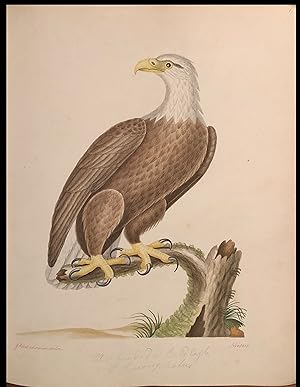
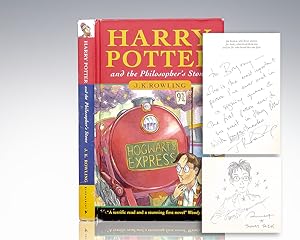
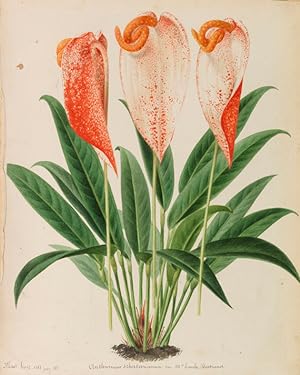
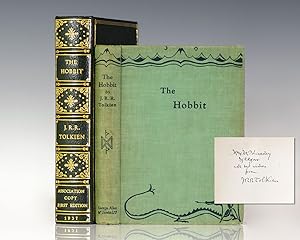
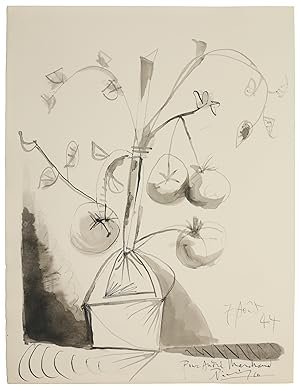
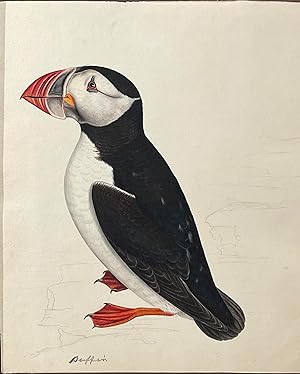
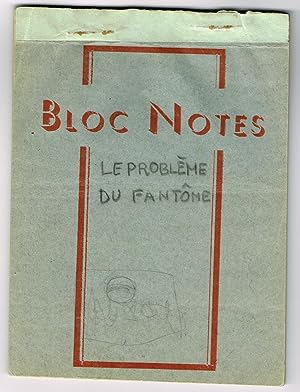
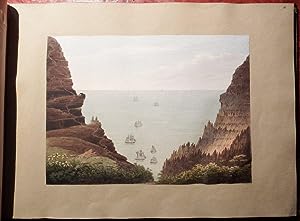
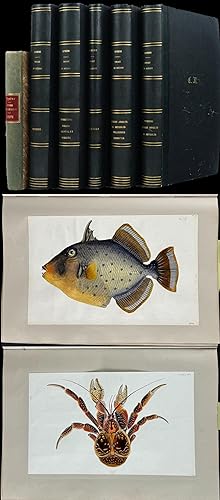
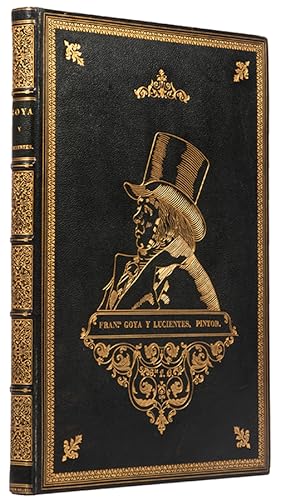
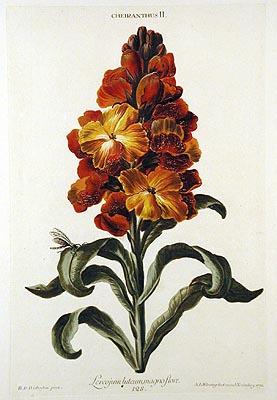
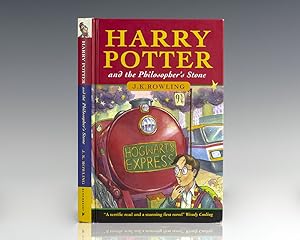
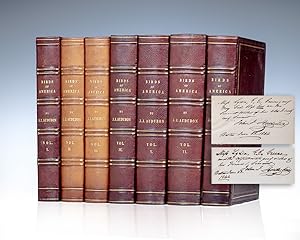

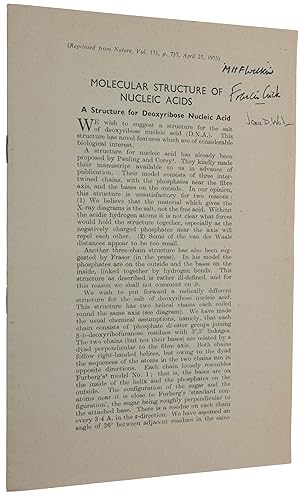
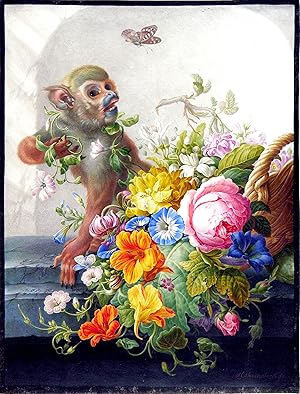
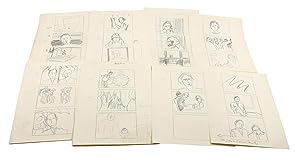
![Imagen del vendedor de Rosa ursina sive Sol ex admirando facularum & macularum suarum phoenomeno varius: necnon circa centrum suum et axem fixum ab occasu in ortum annua, circaq[ue] alium axem mobilem ab ortu in occasum conuersione quasi menstrua, super polos proprios, libris quatuor mobilis ostensus. a la venta por SOPHIA RARE BOOKS](https://pictures.abebooks.com/inventory/md/md30802727743.jpg)
